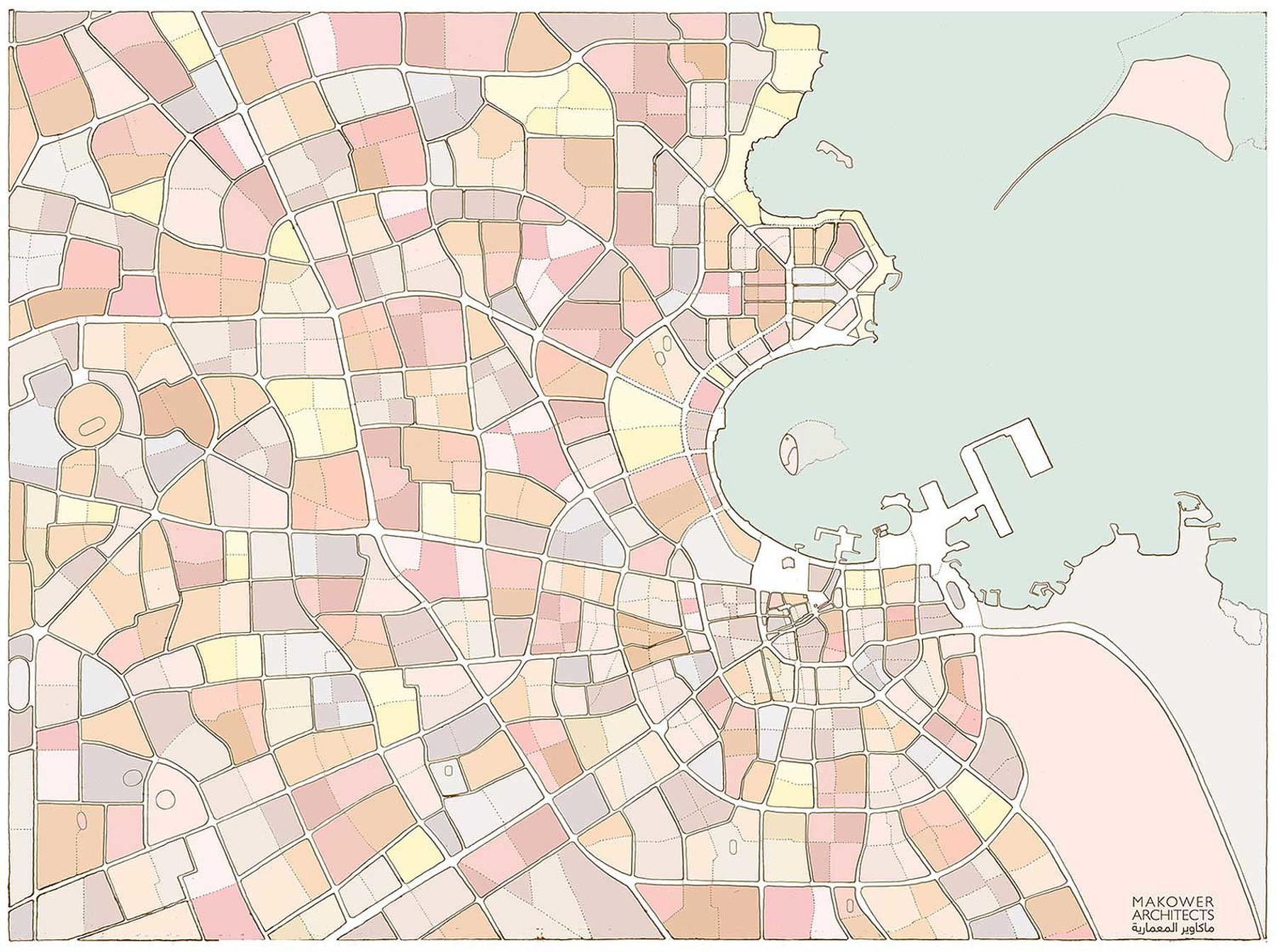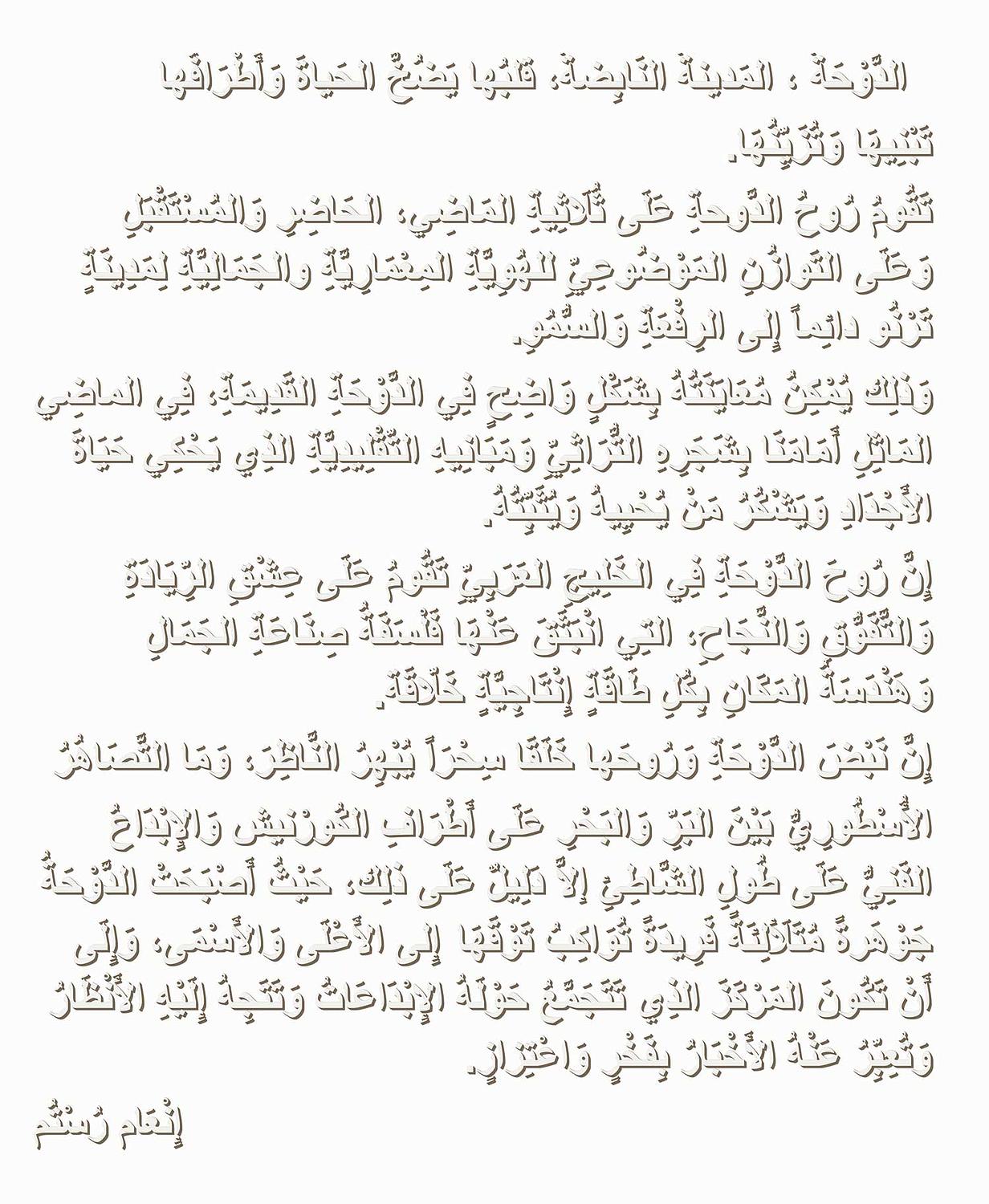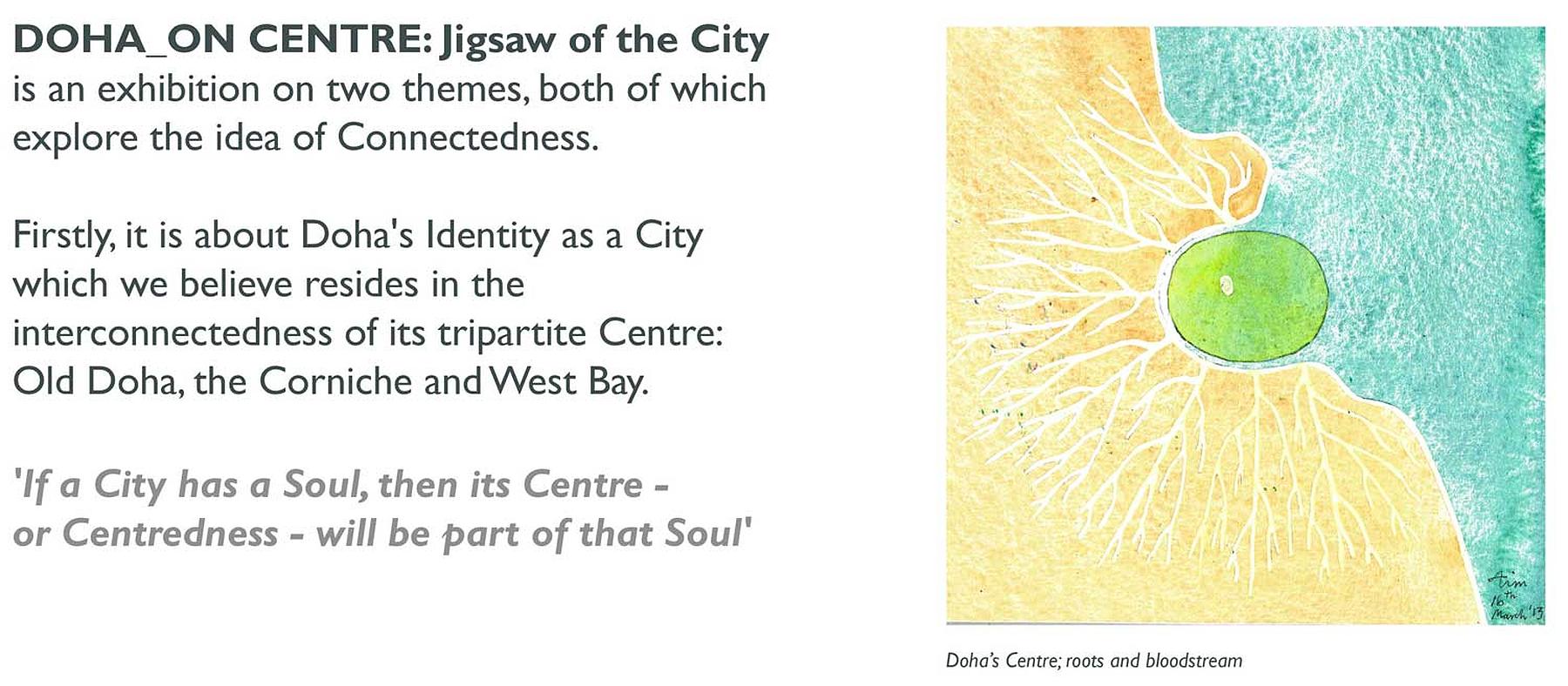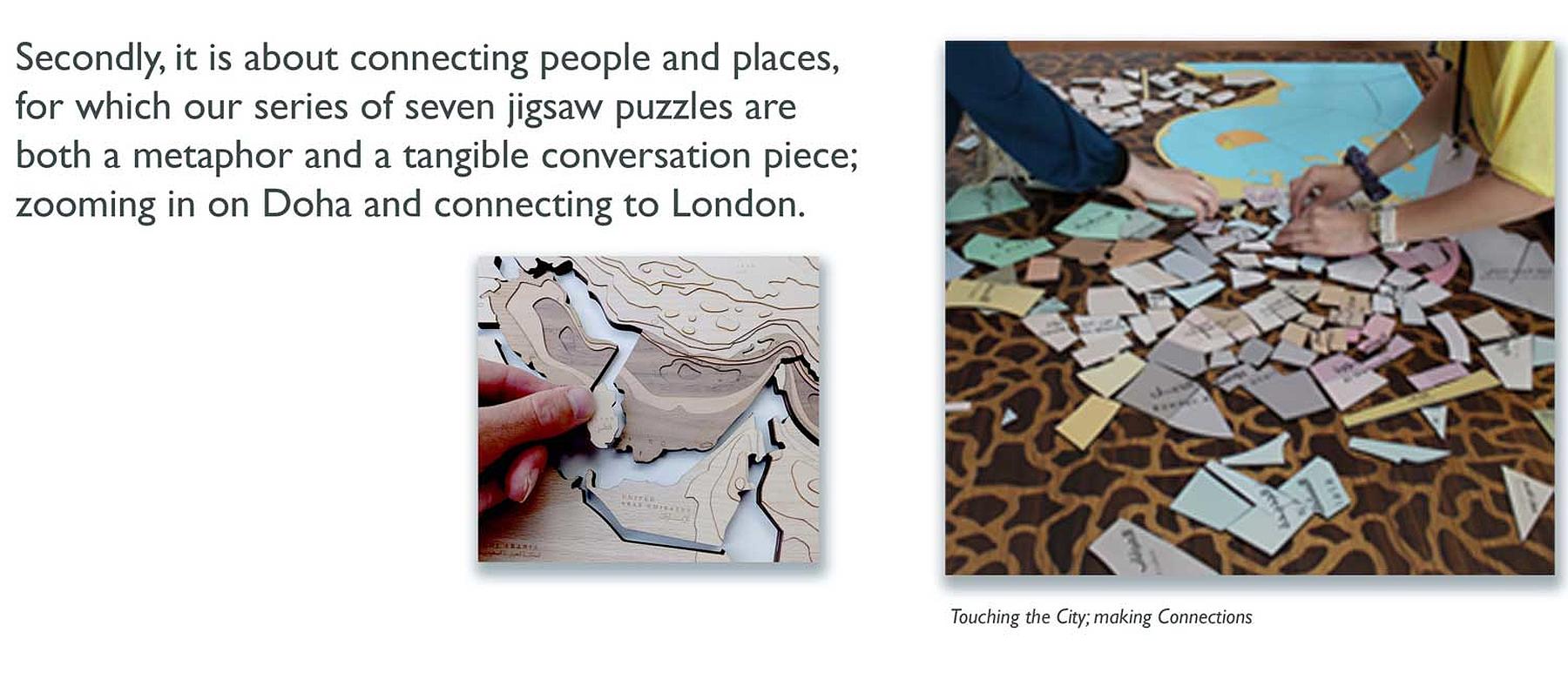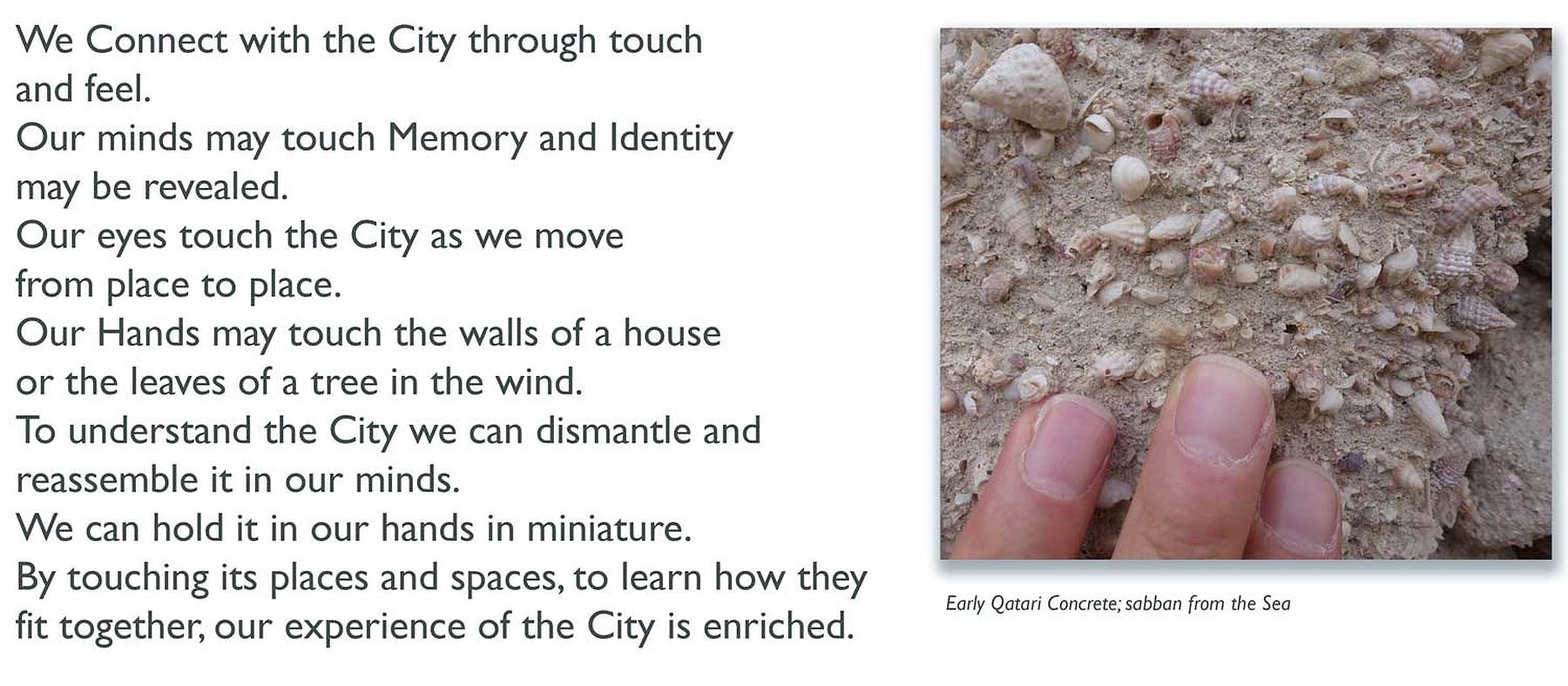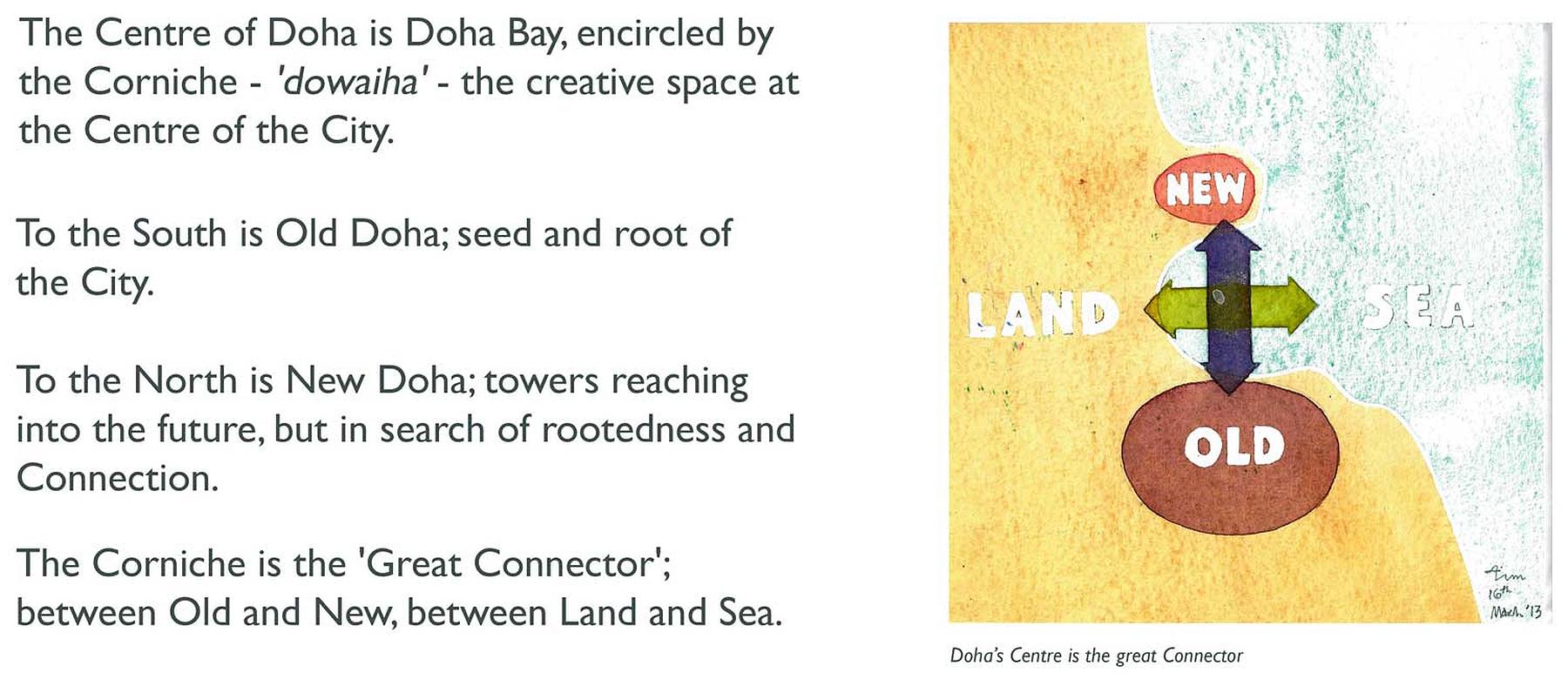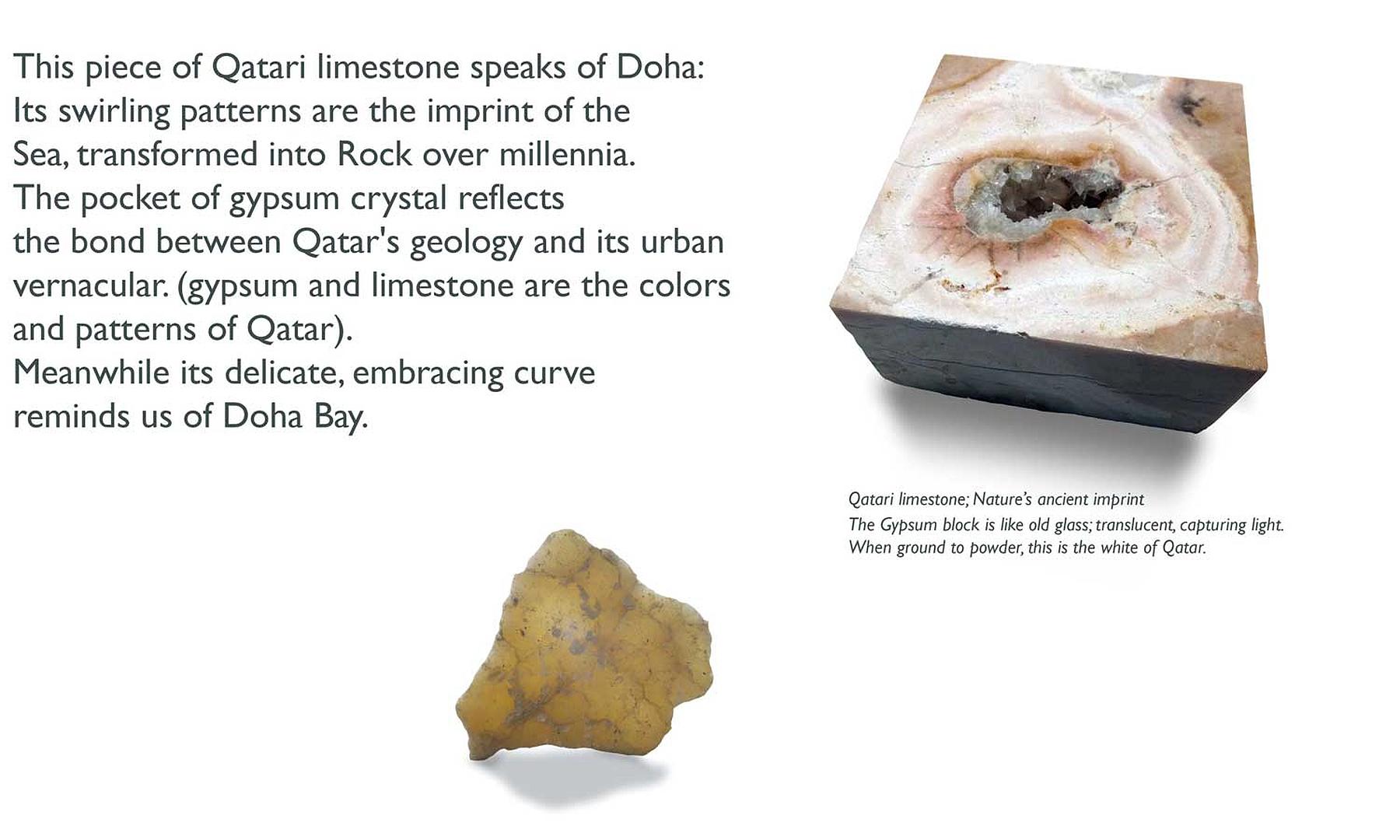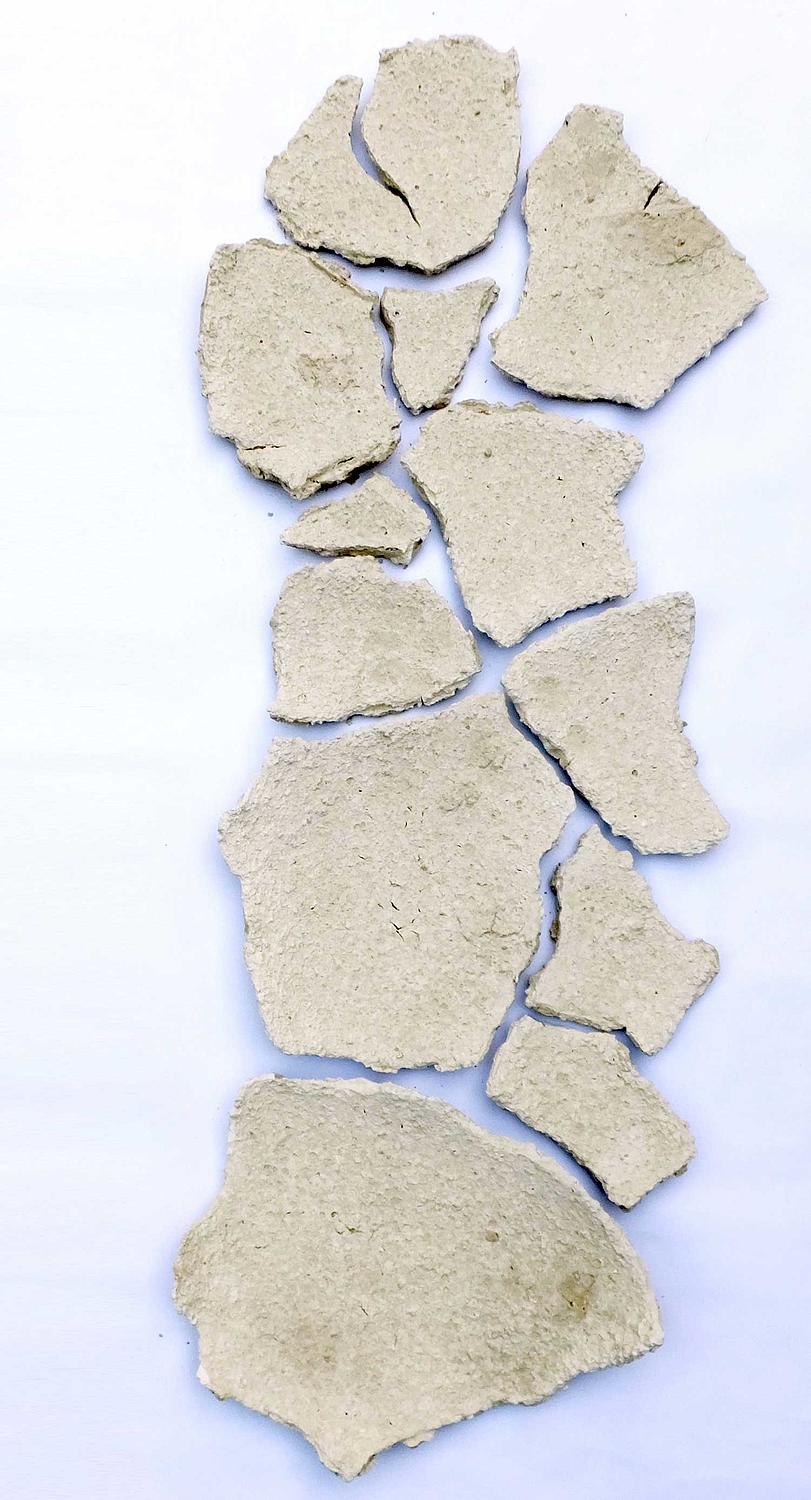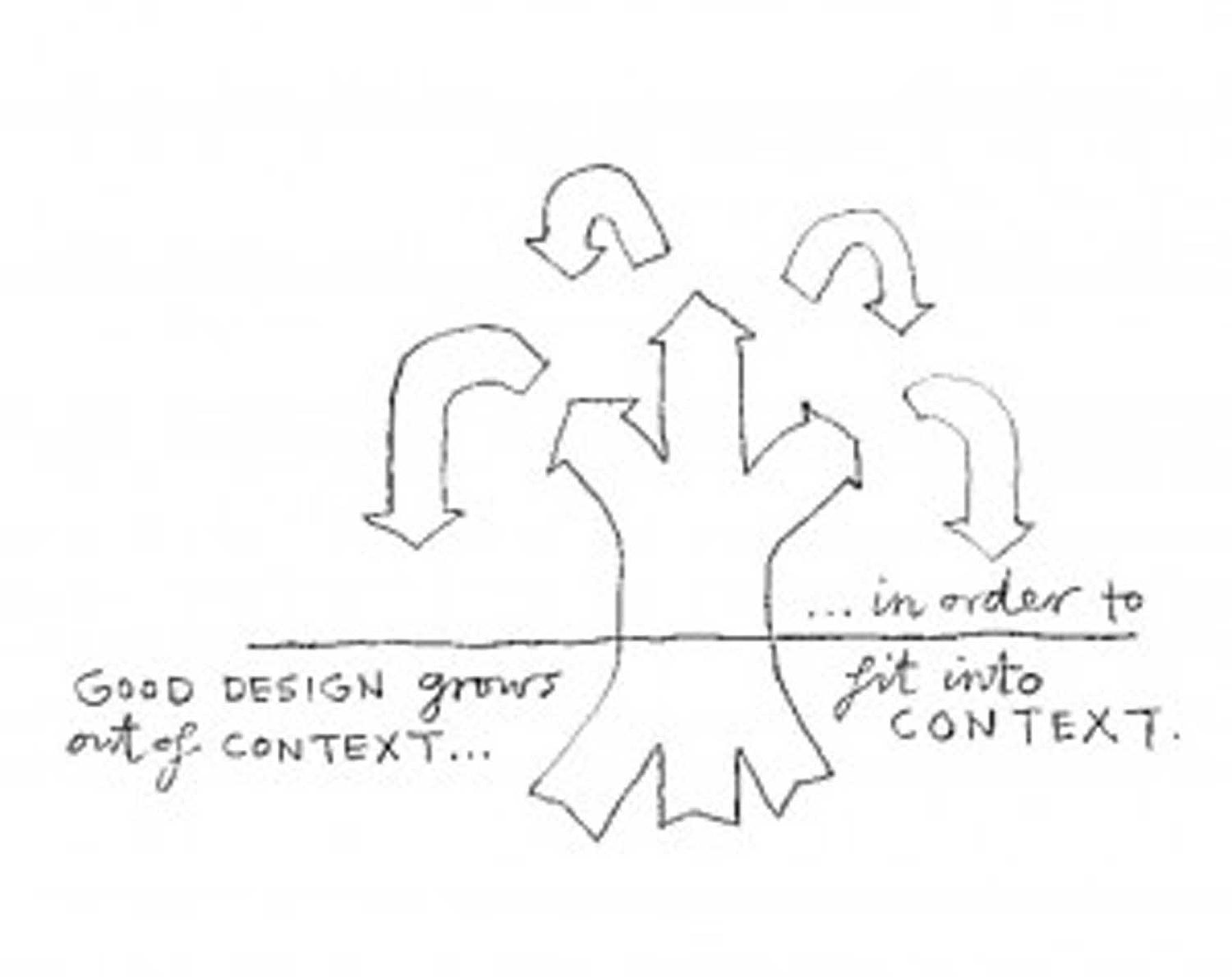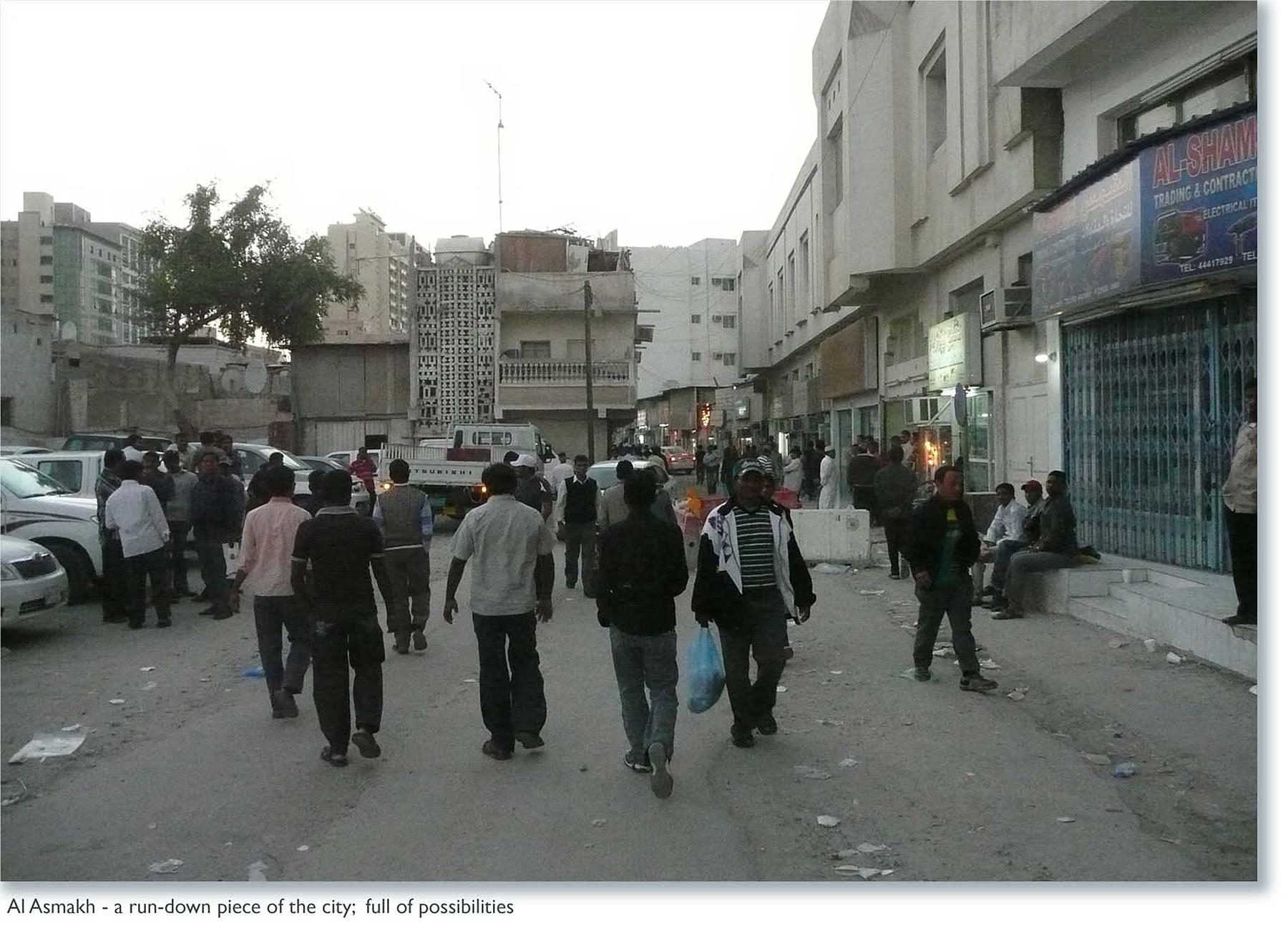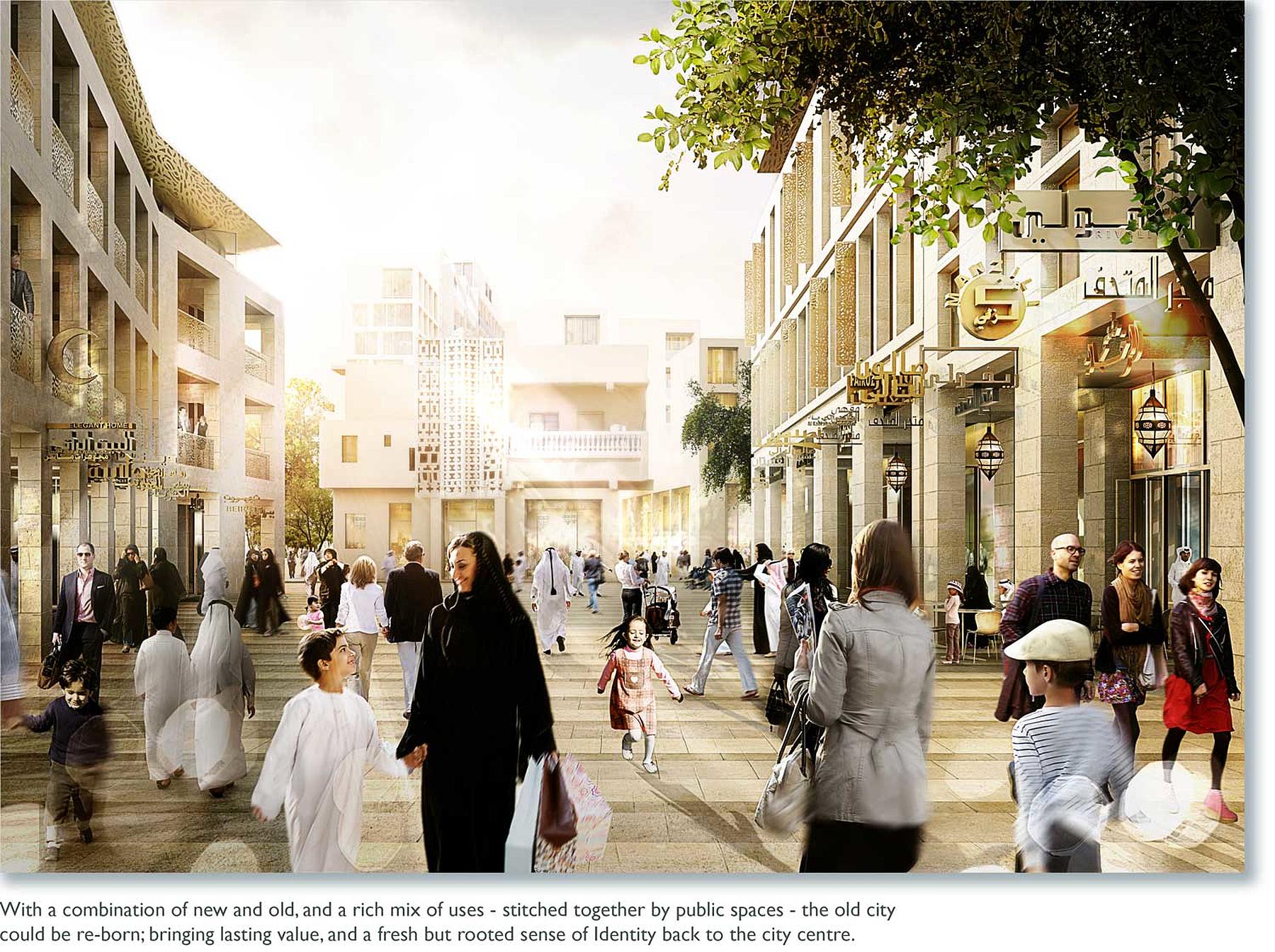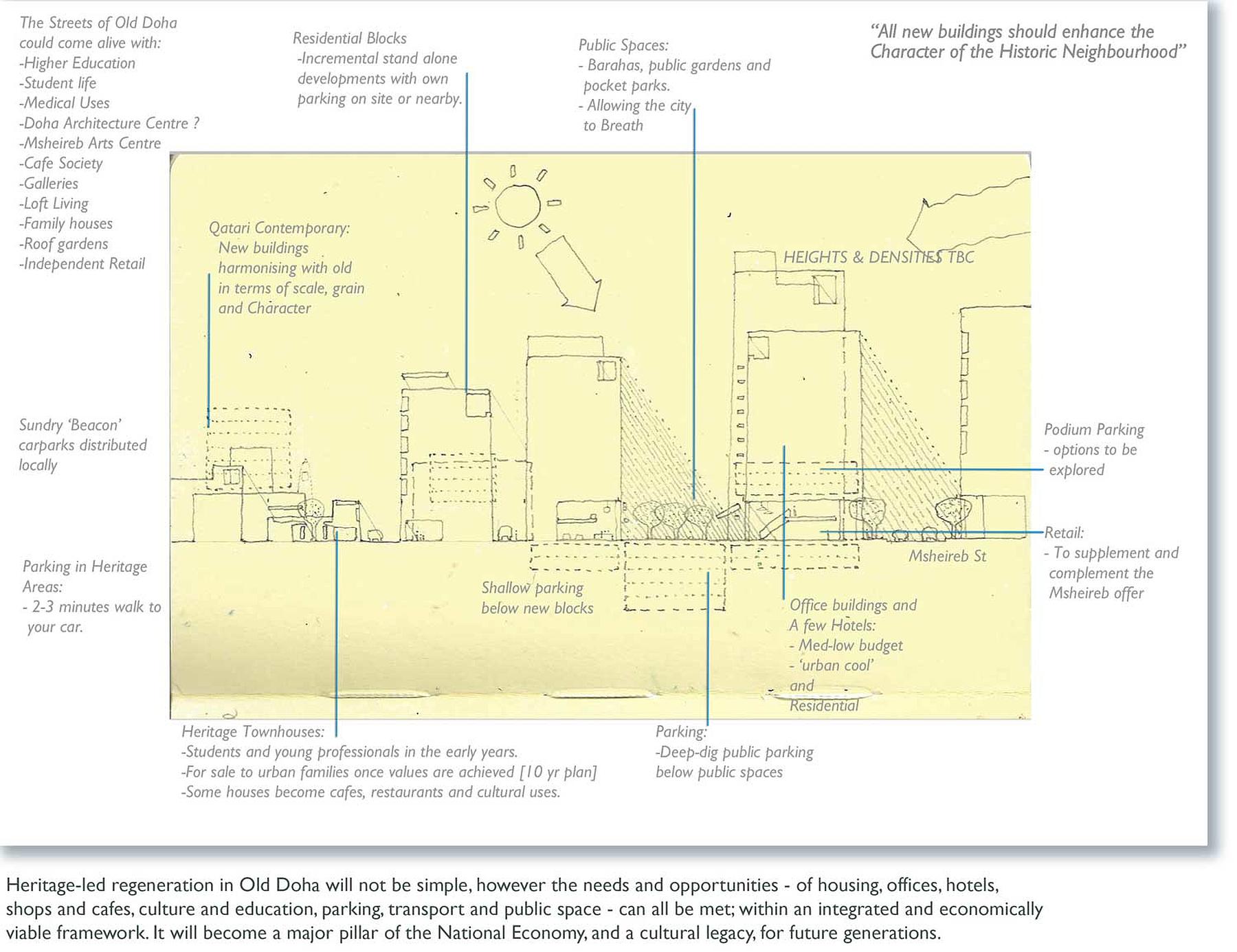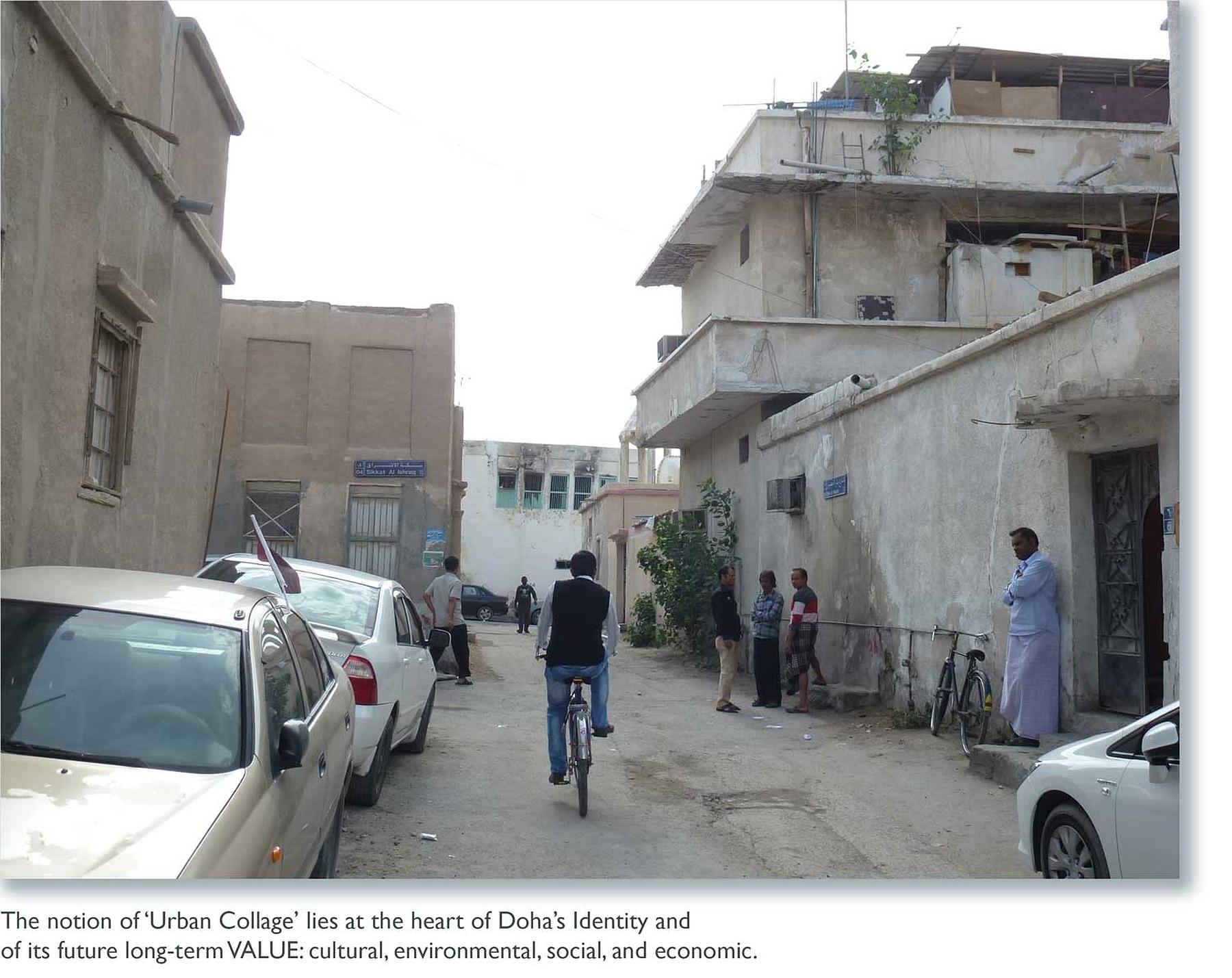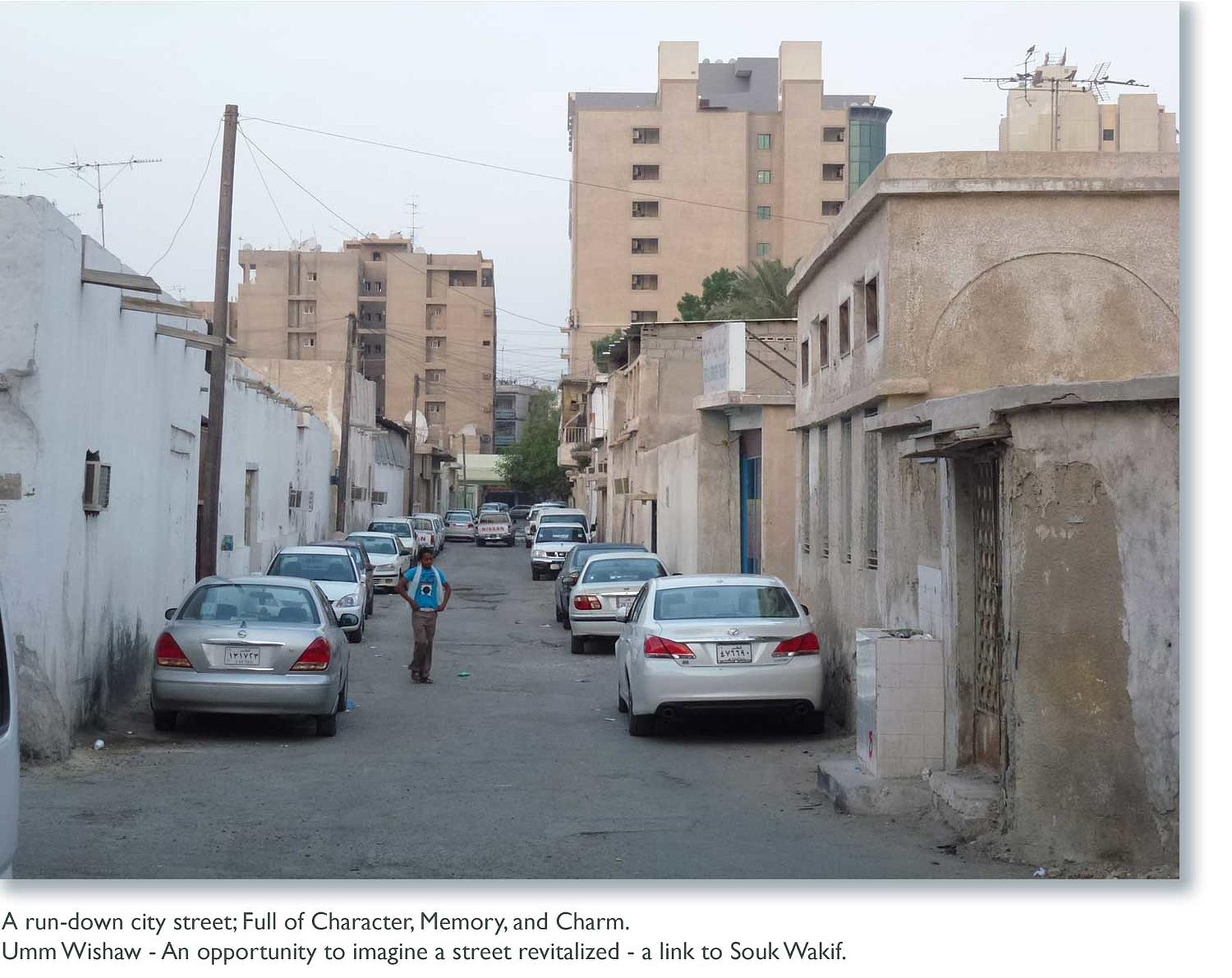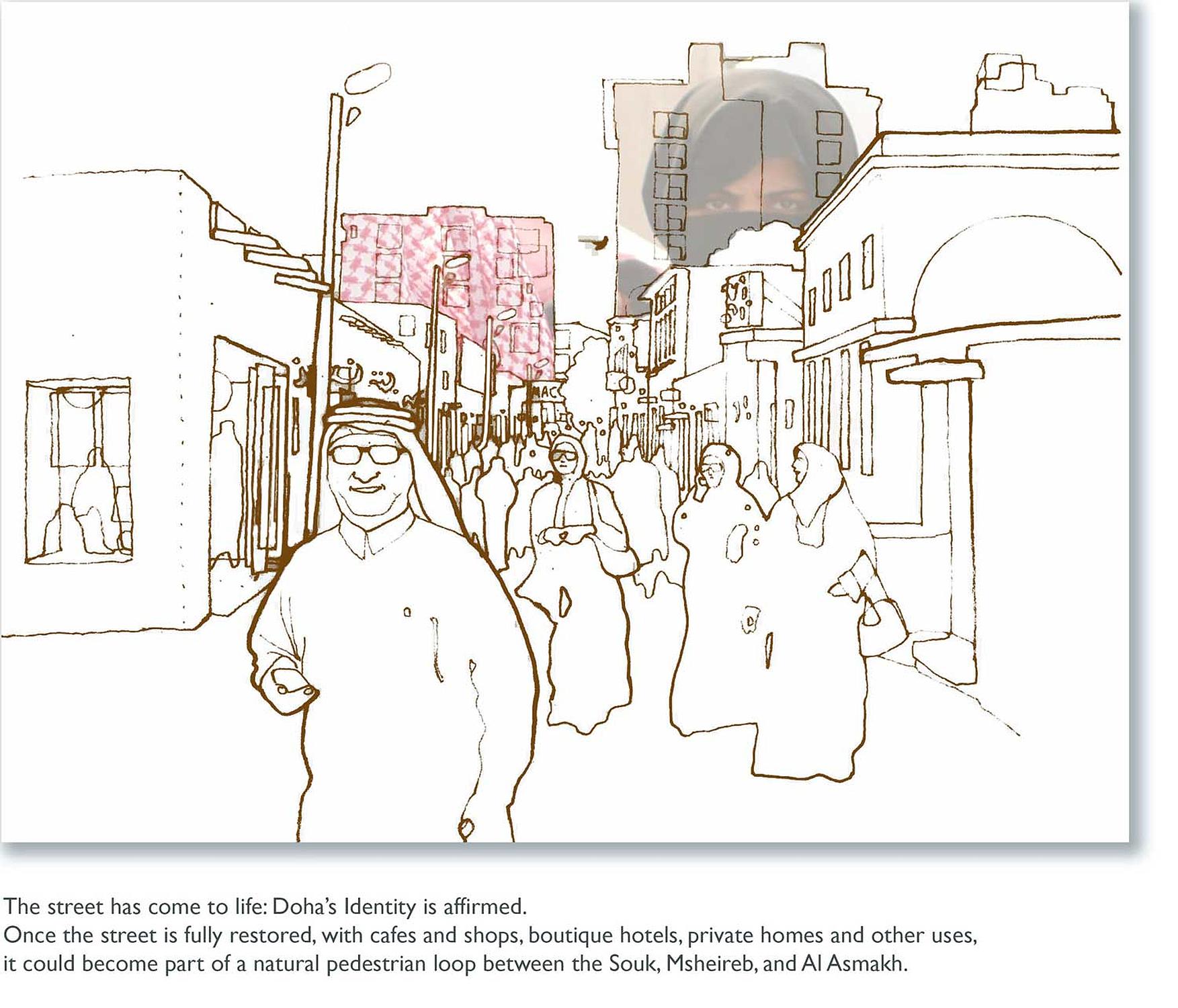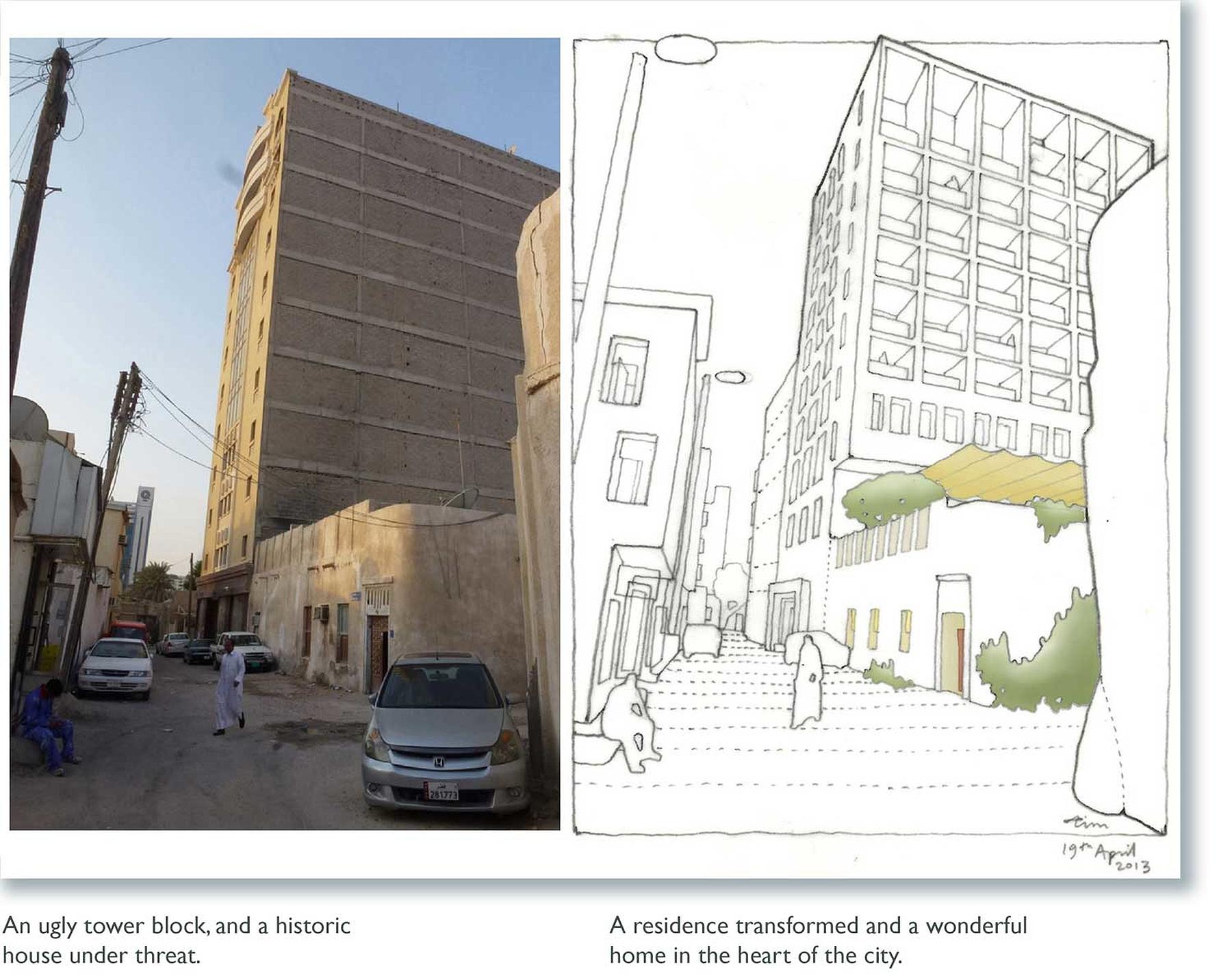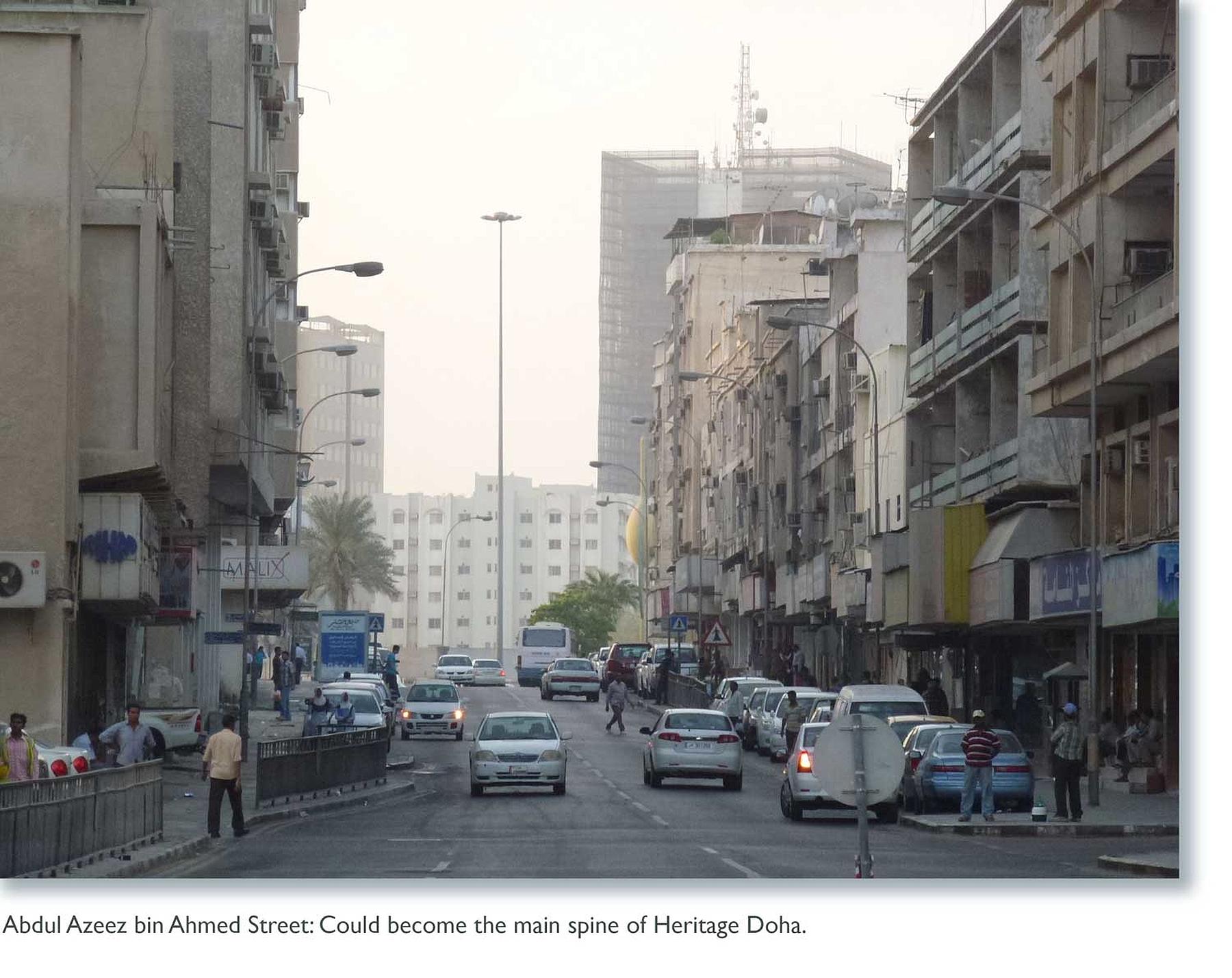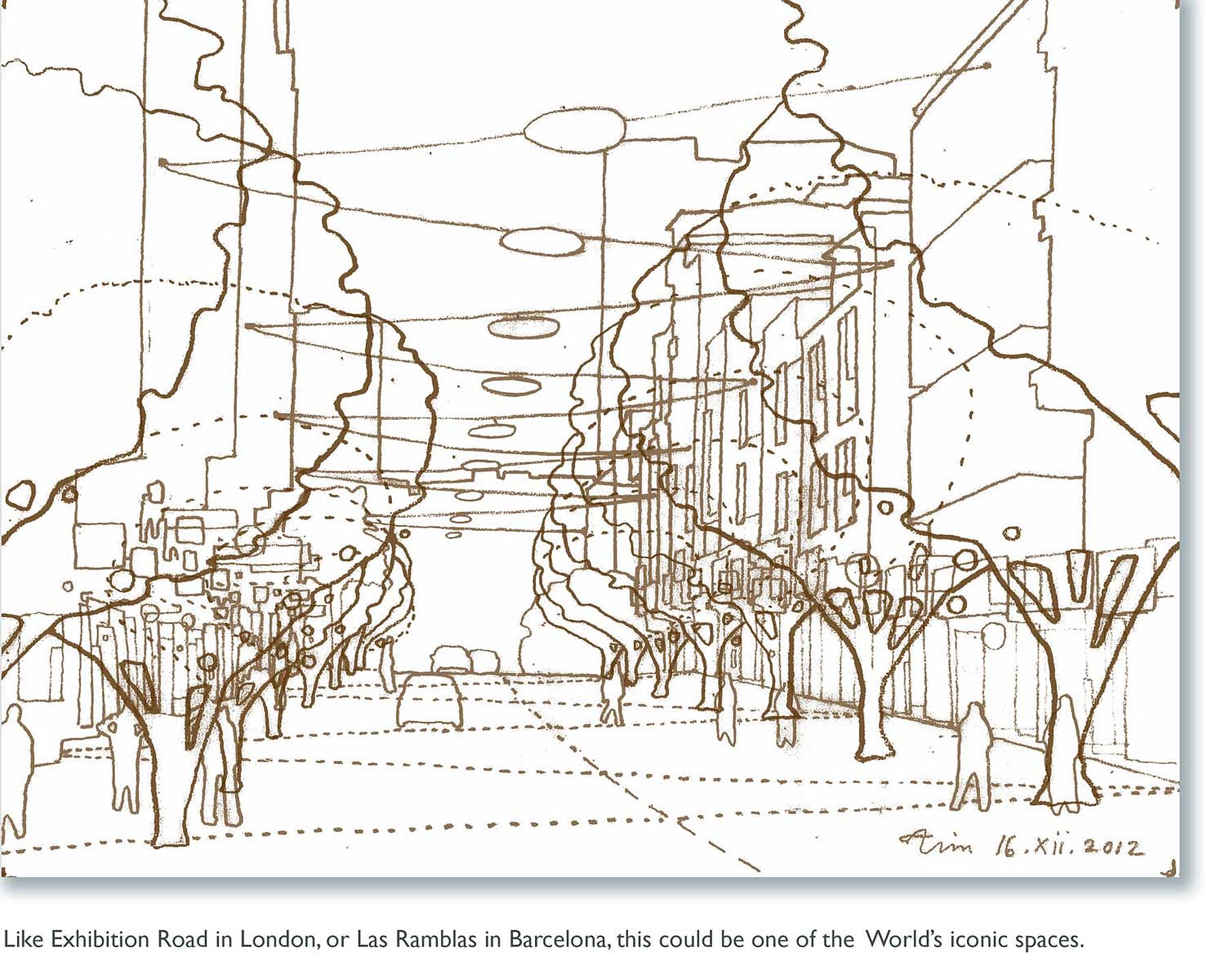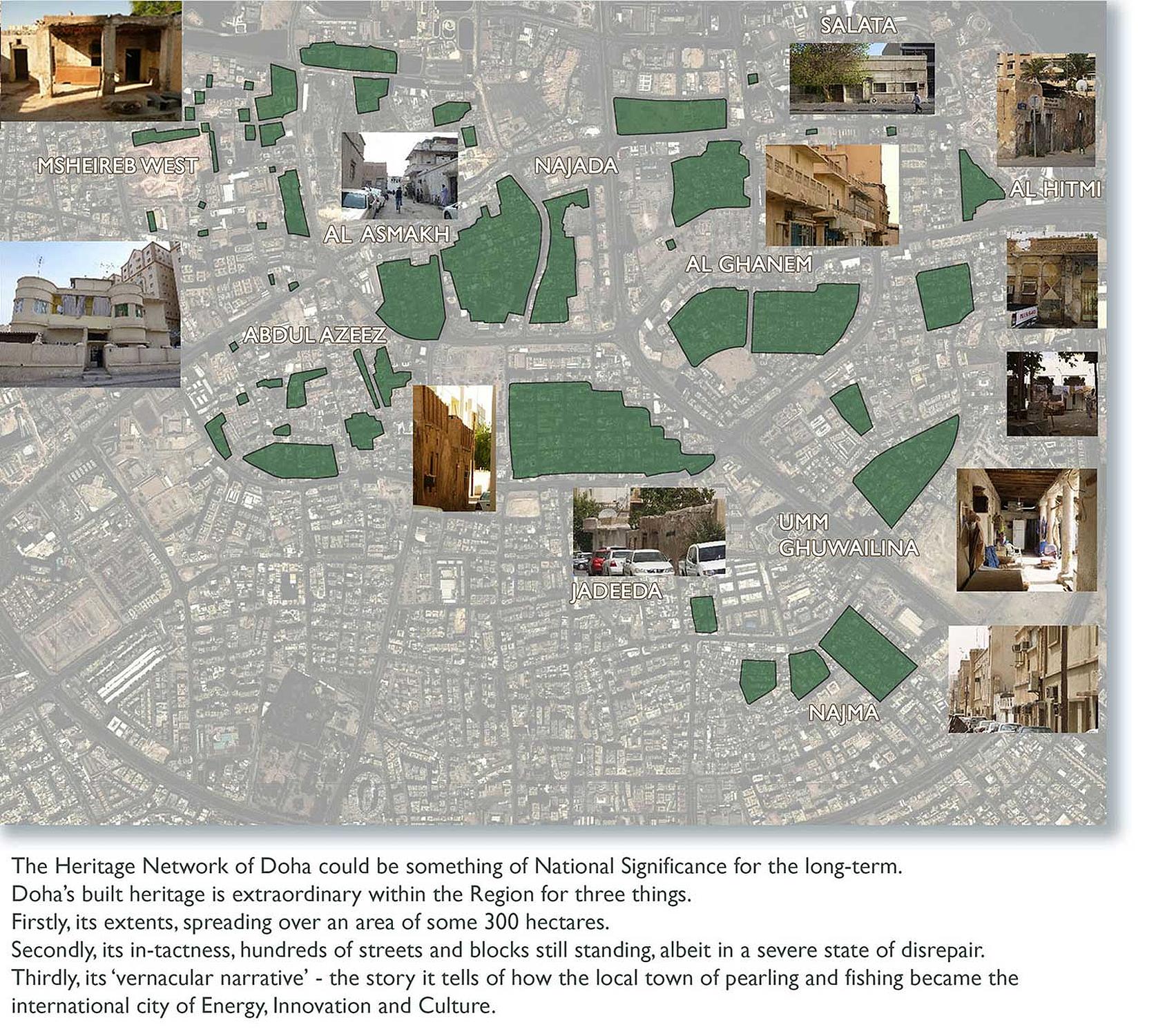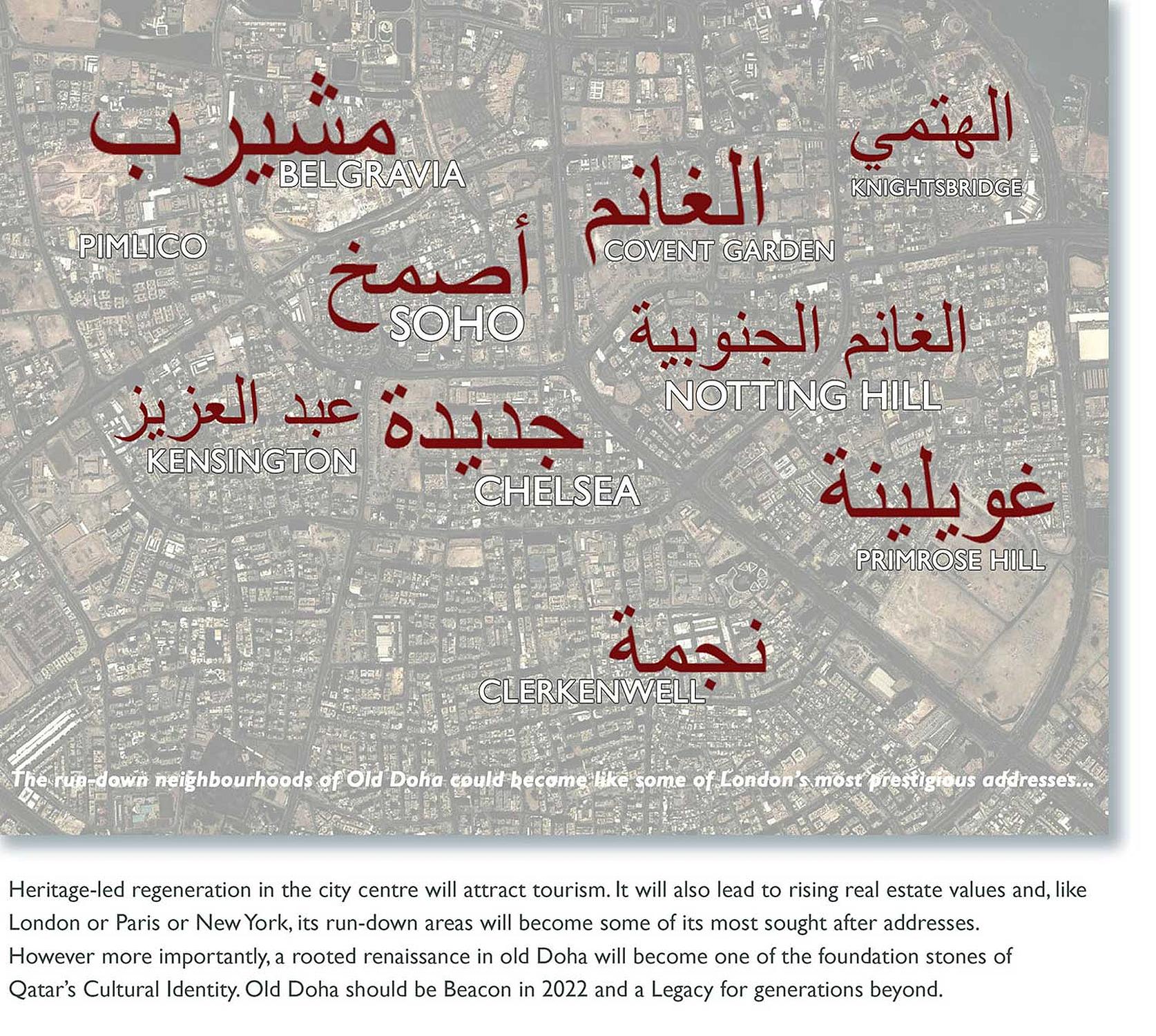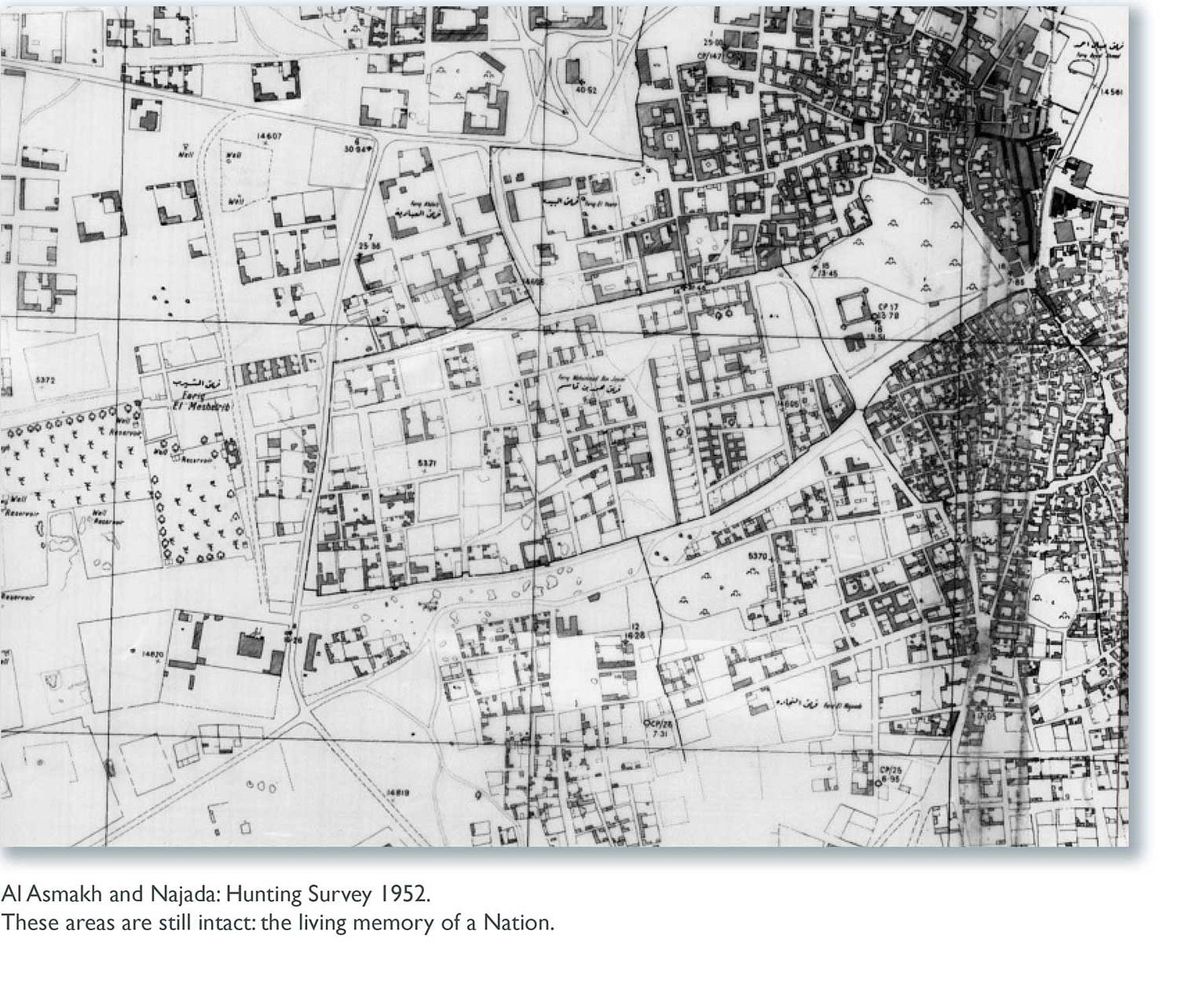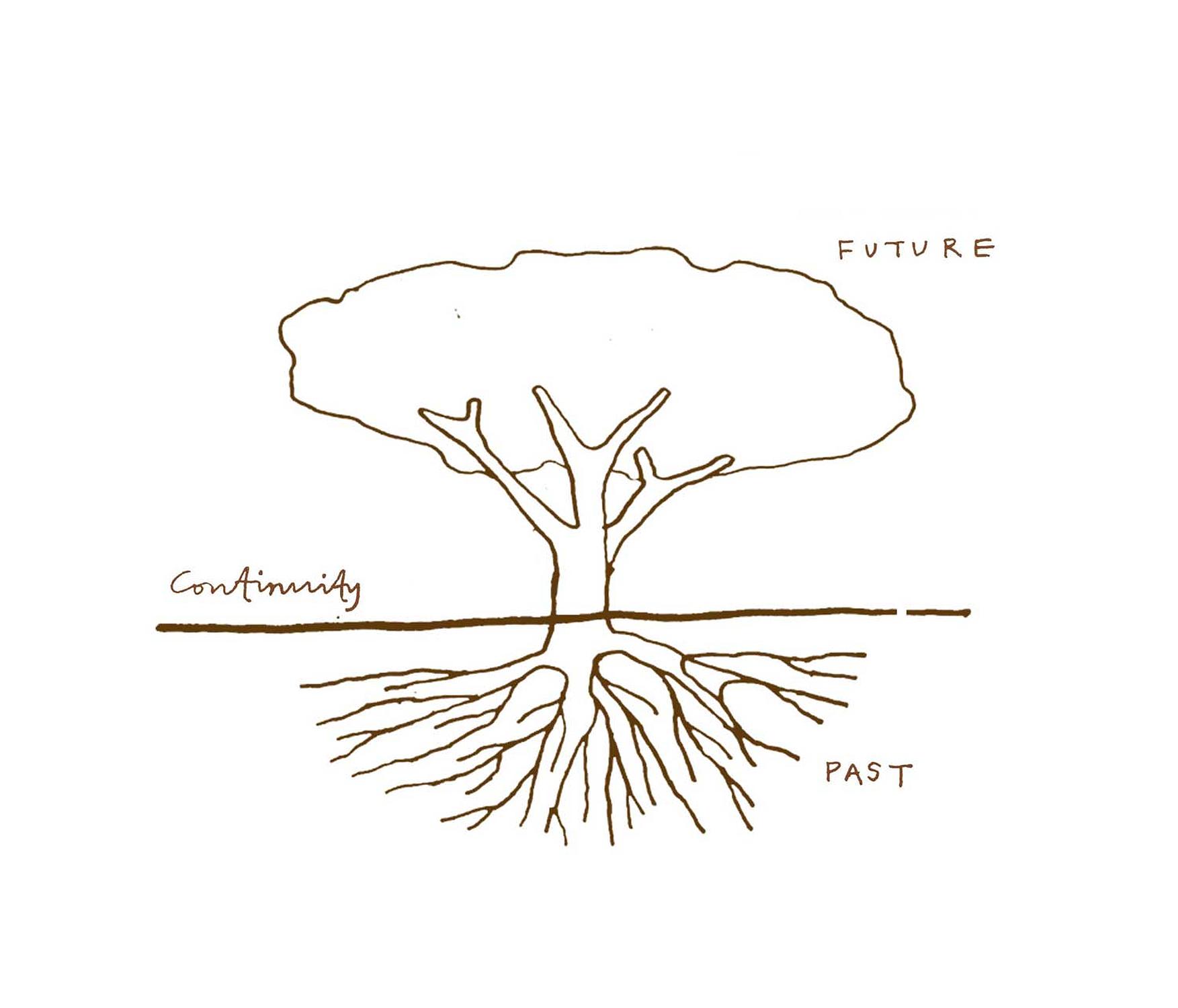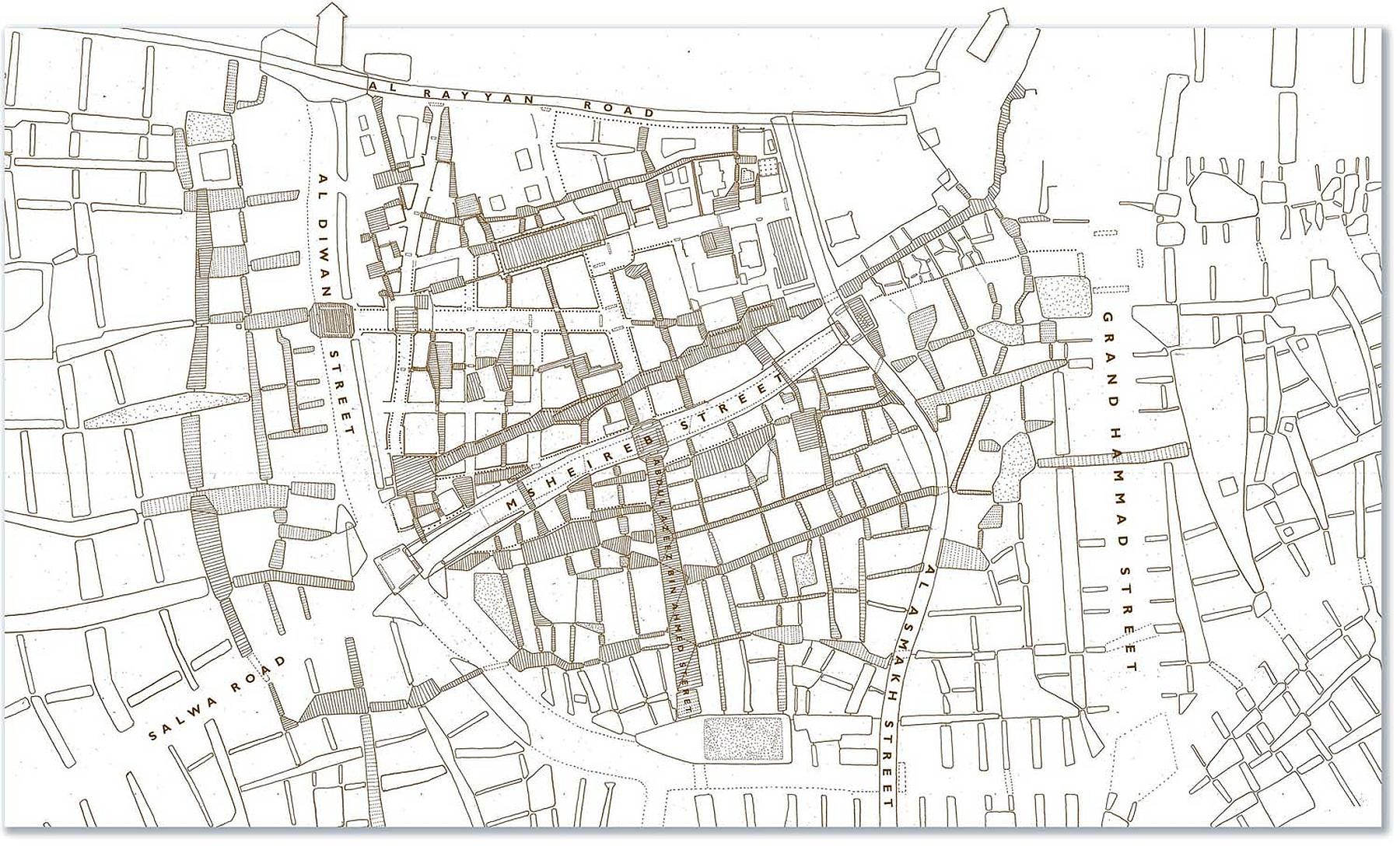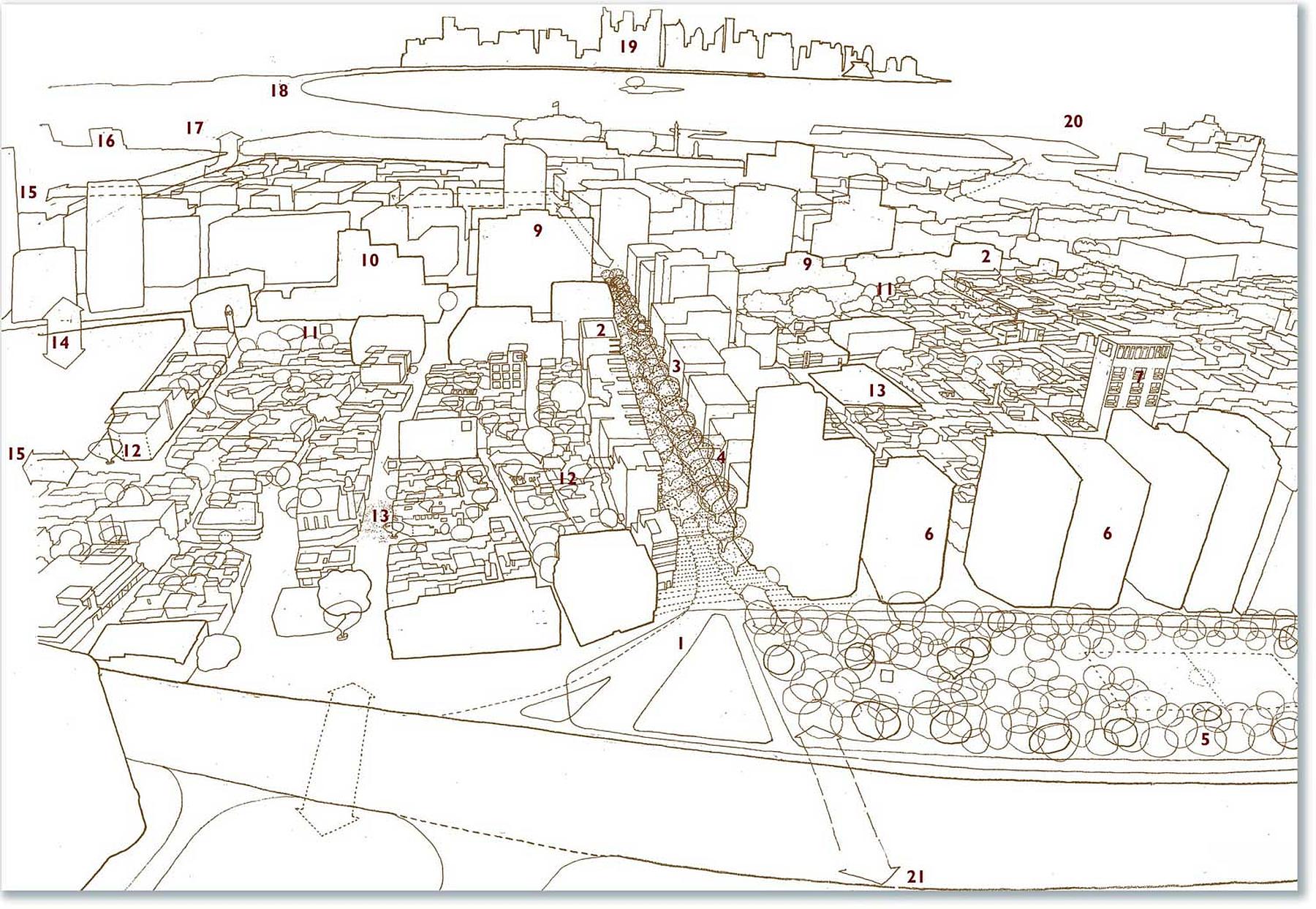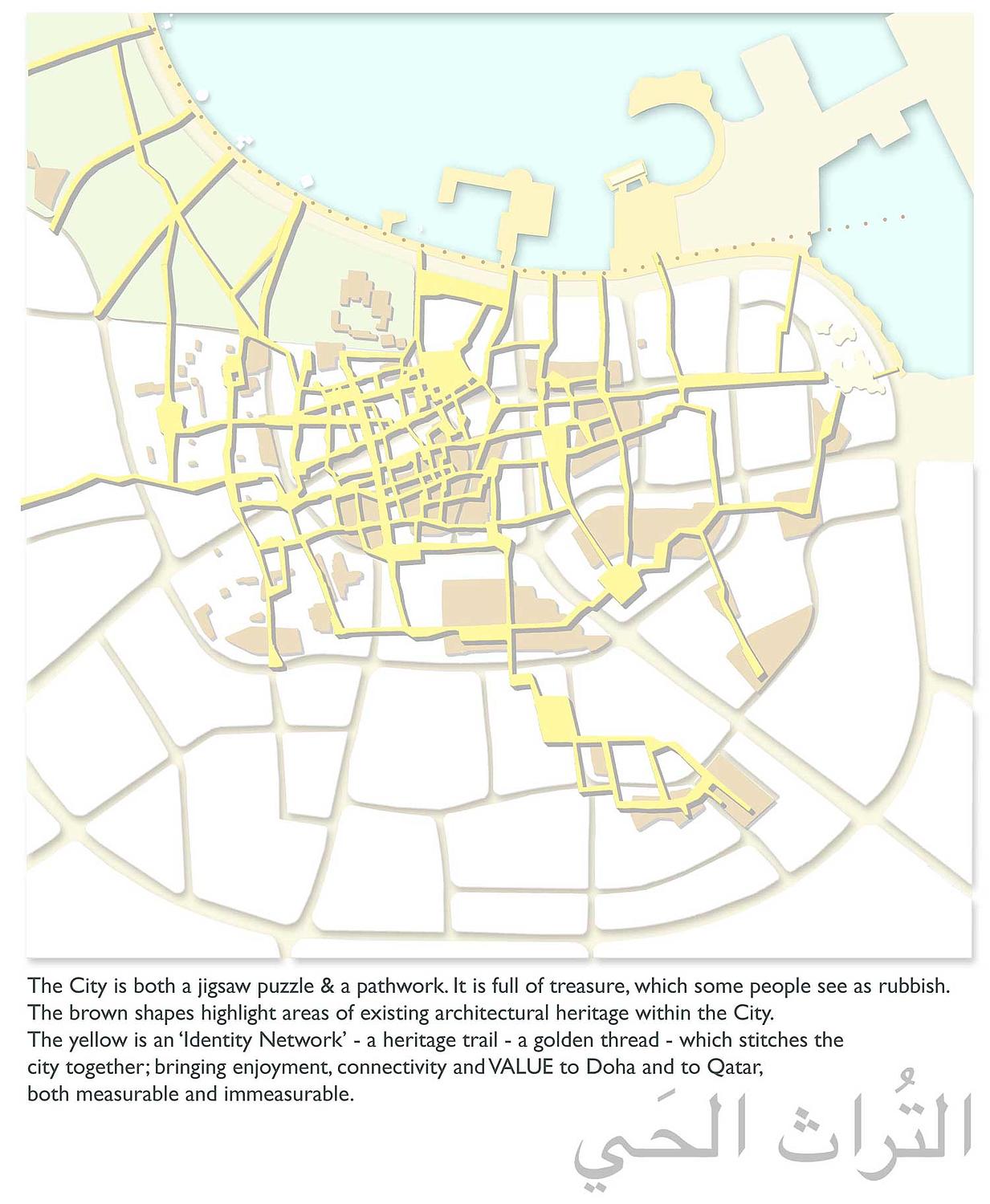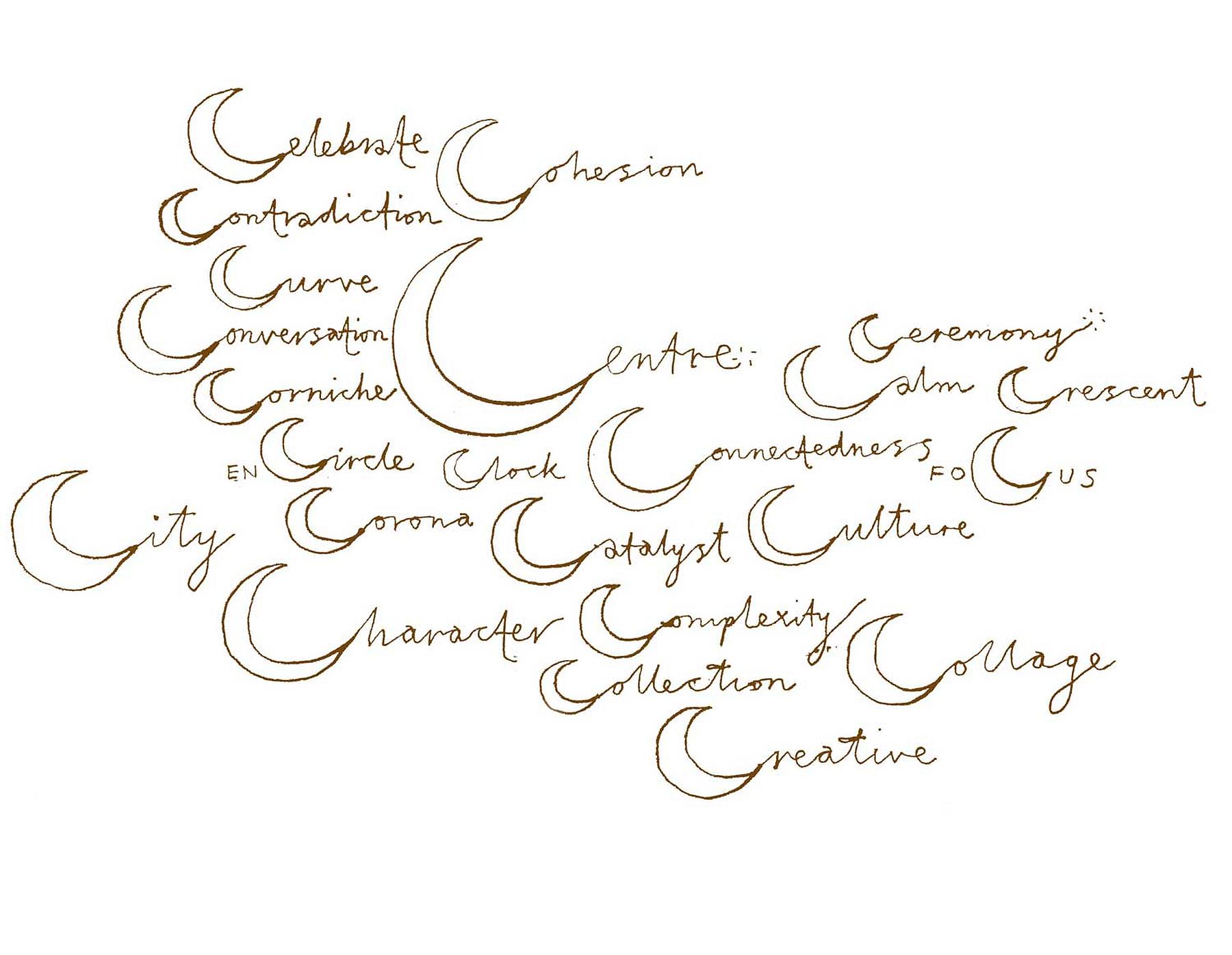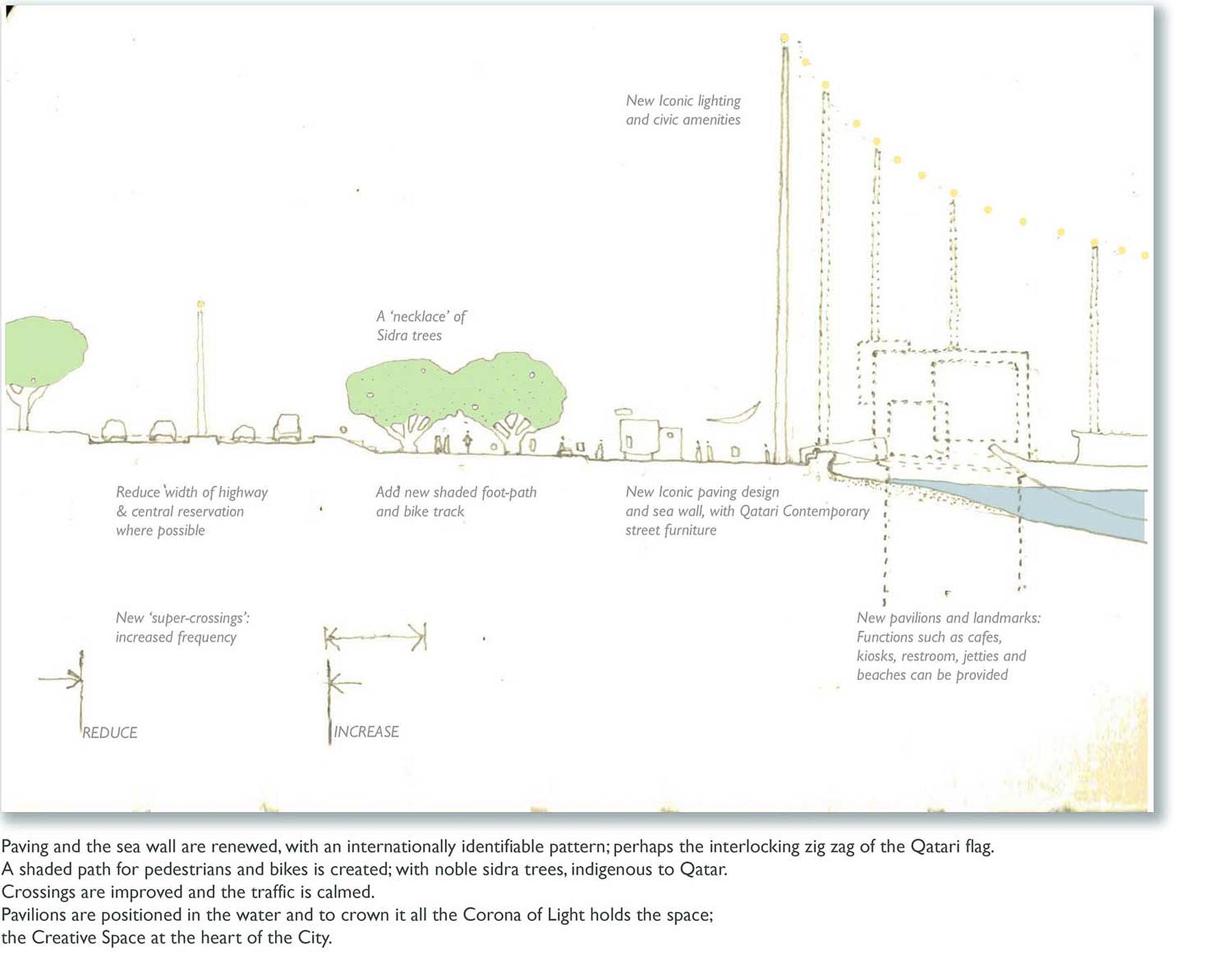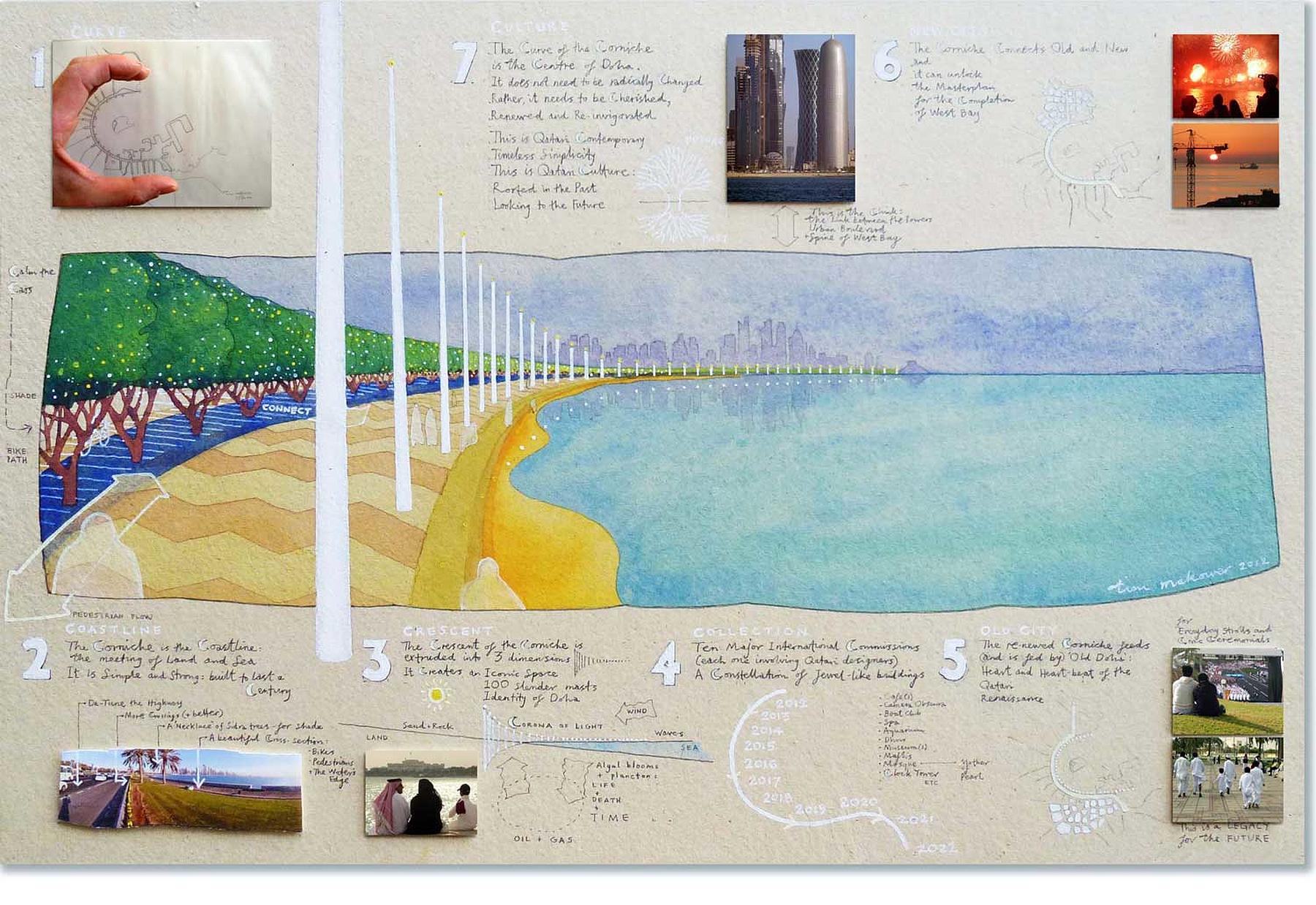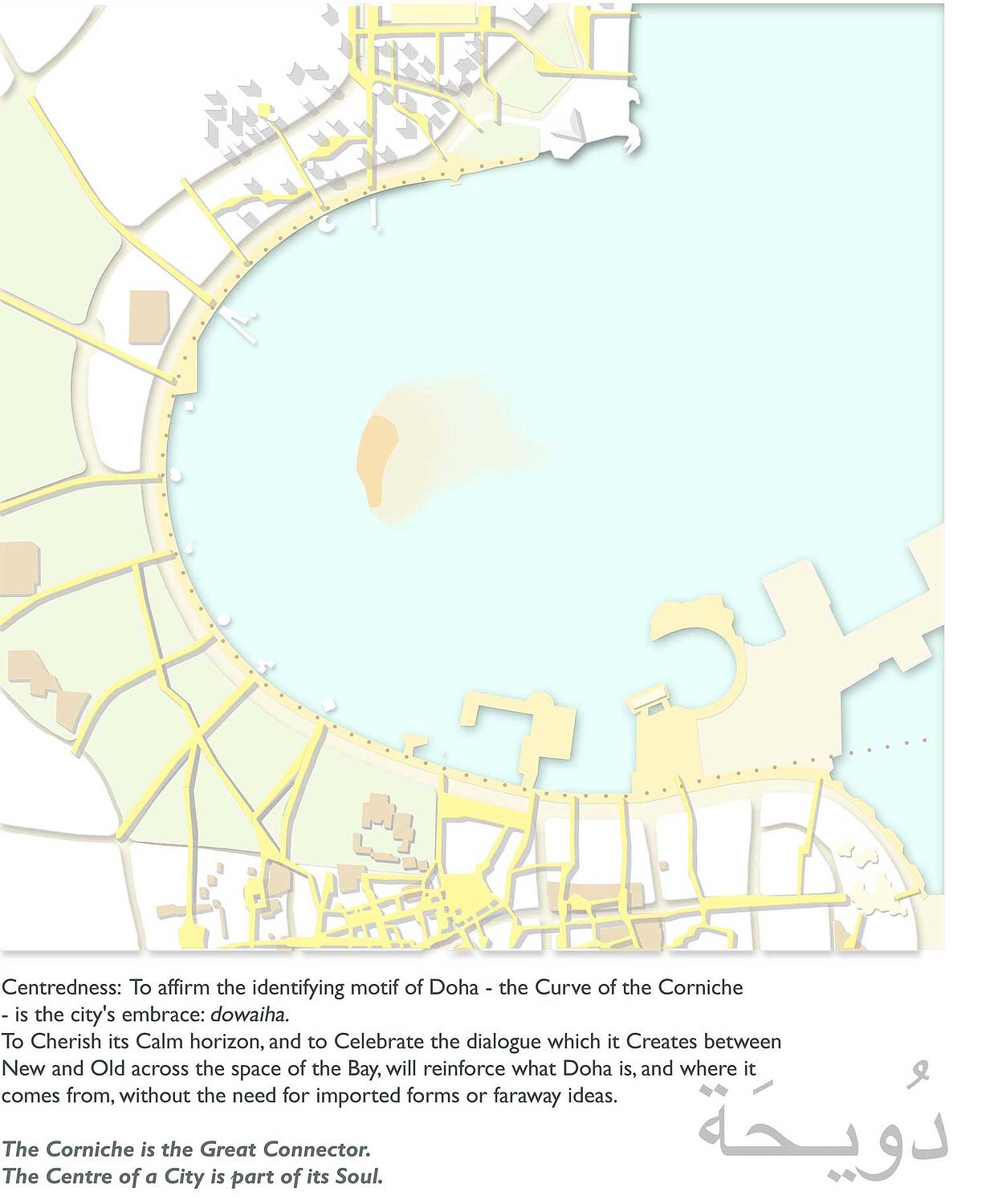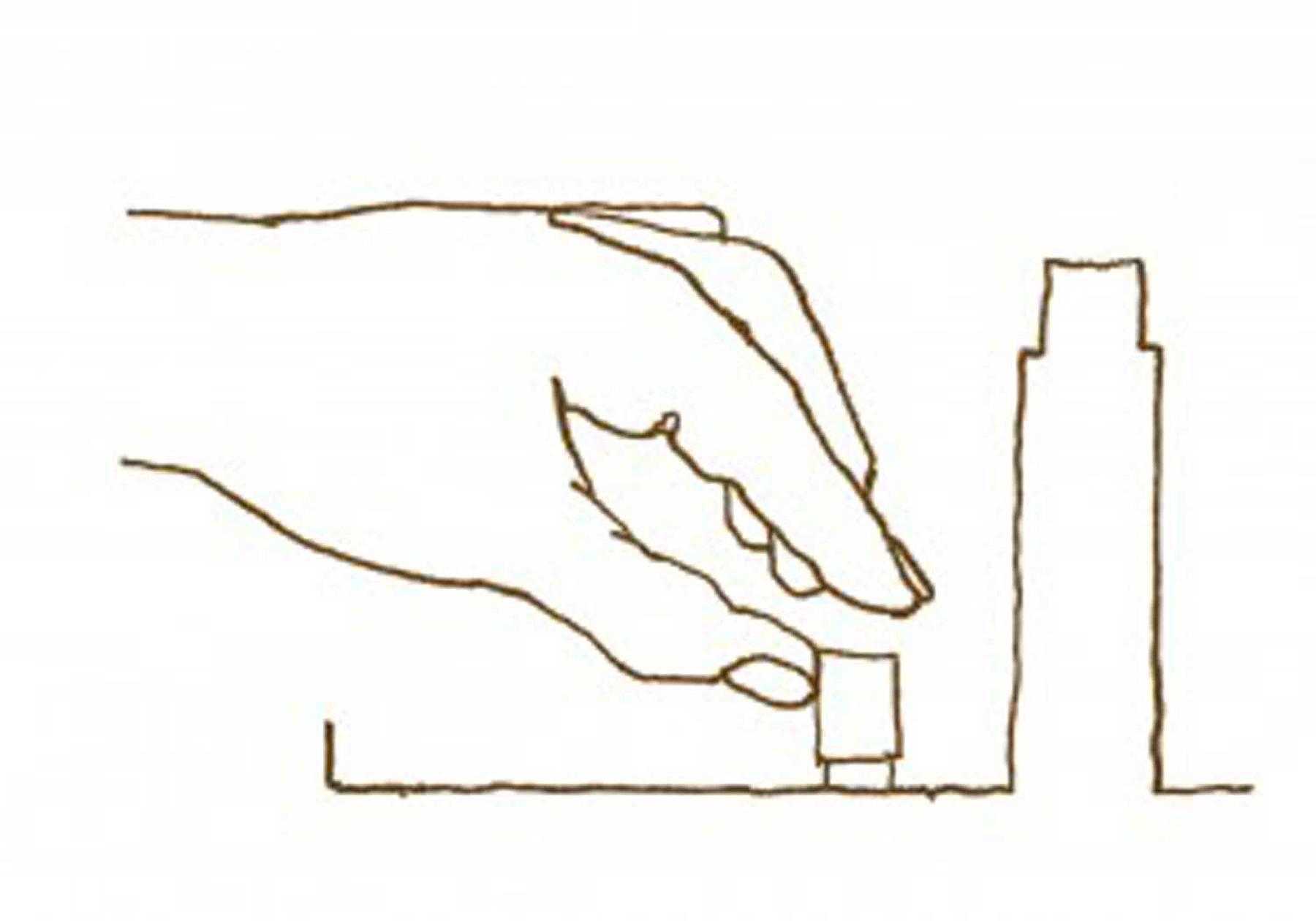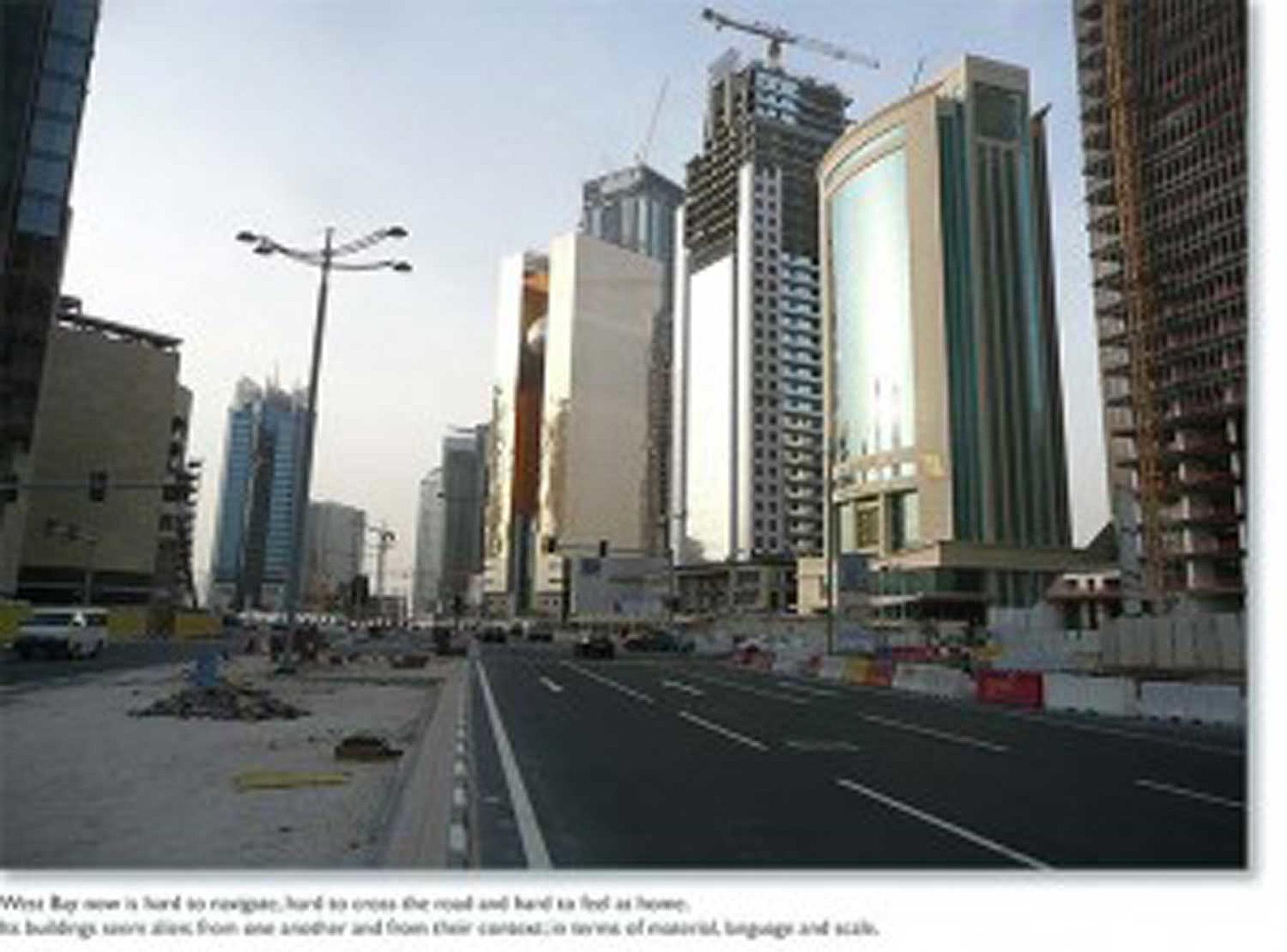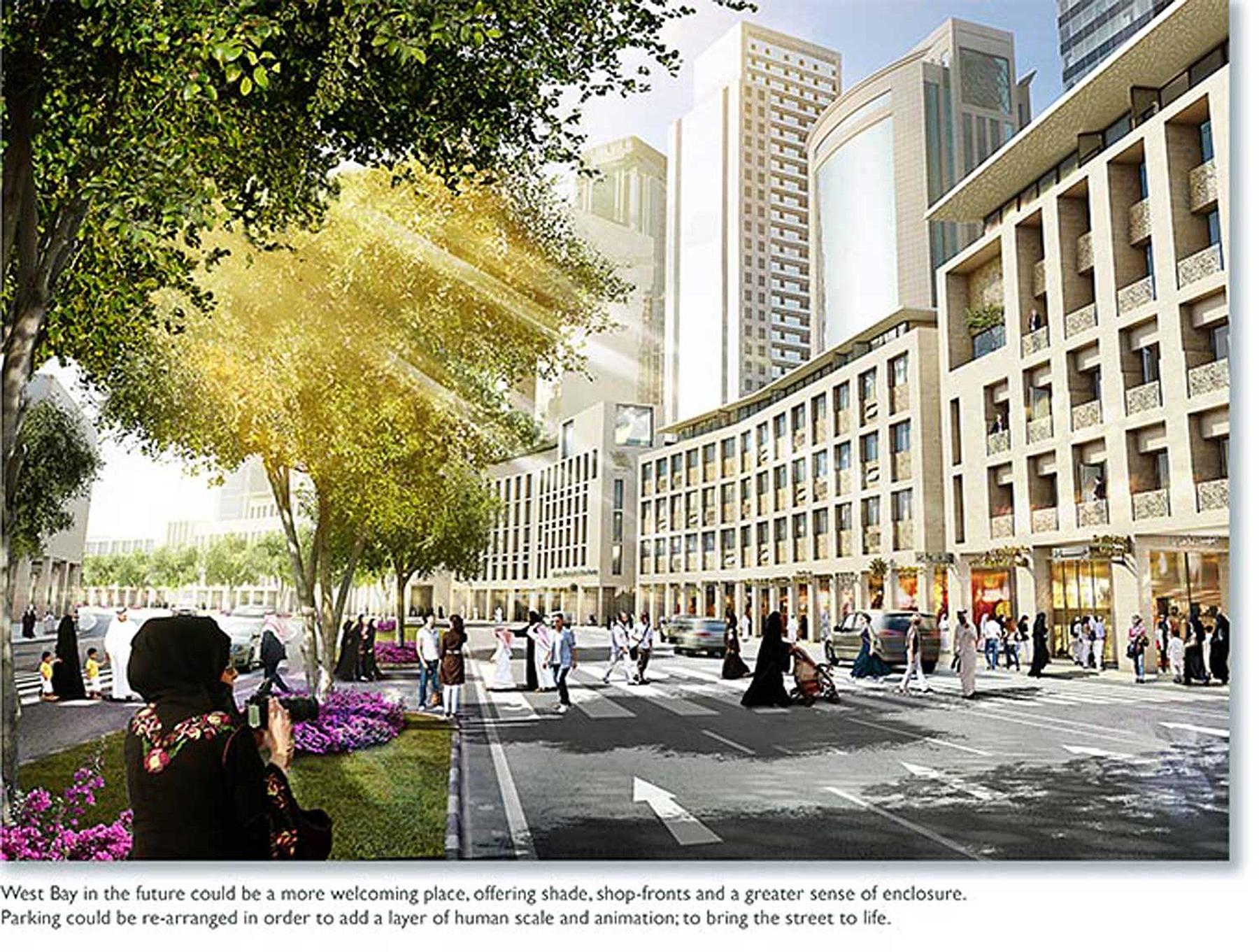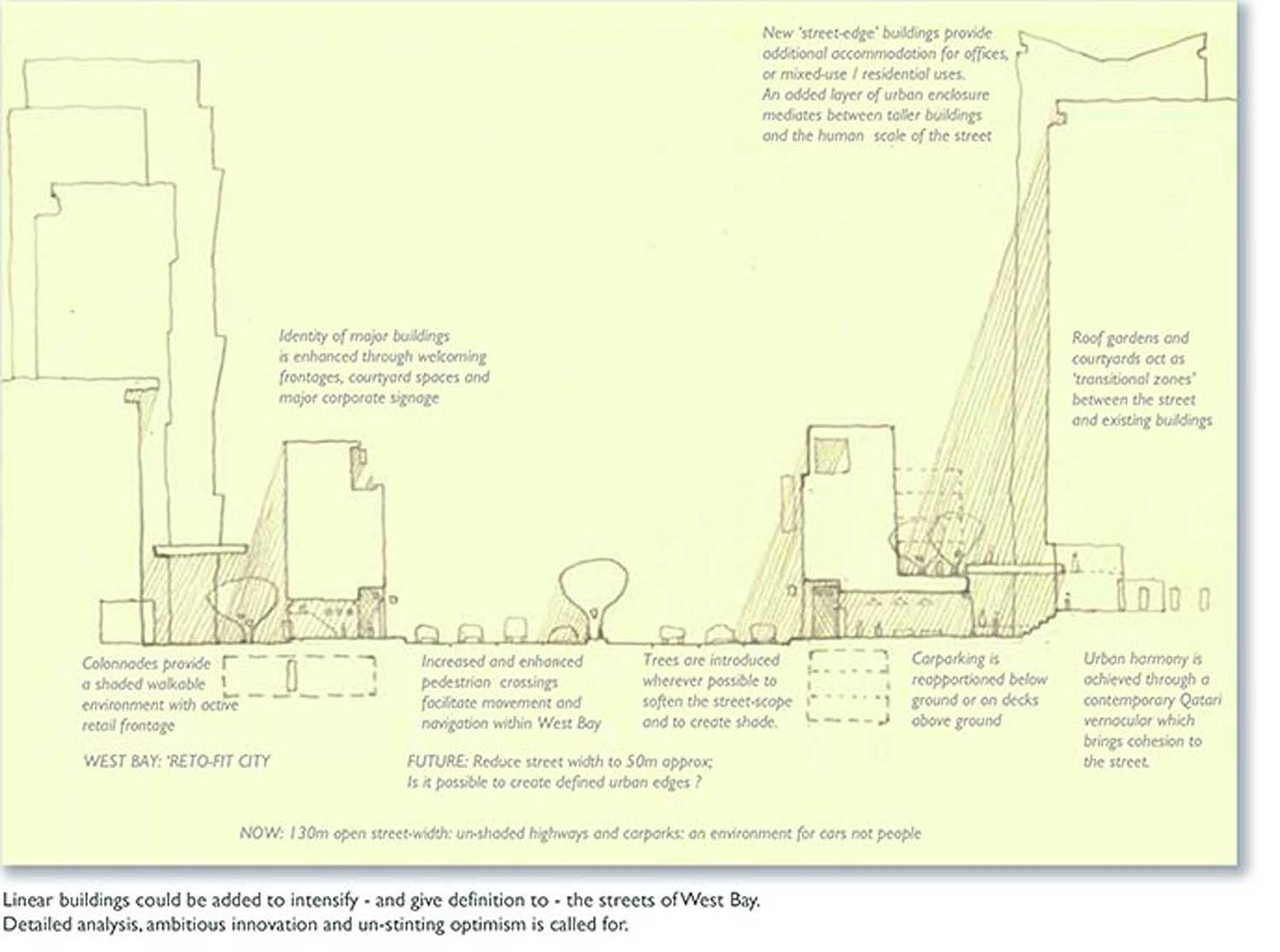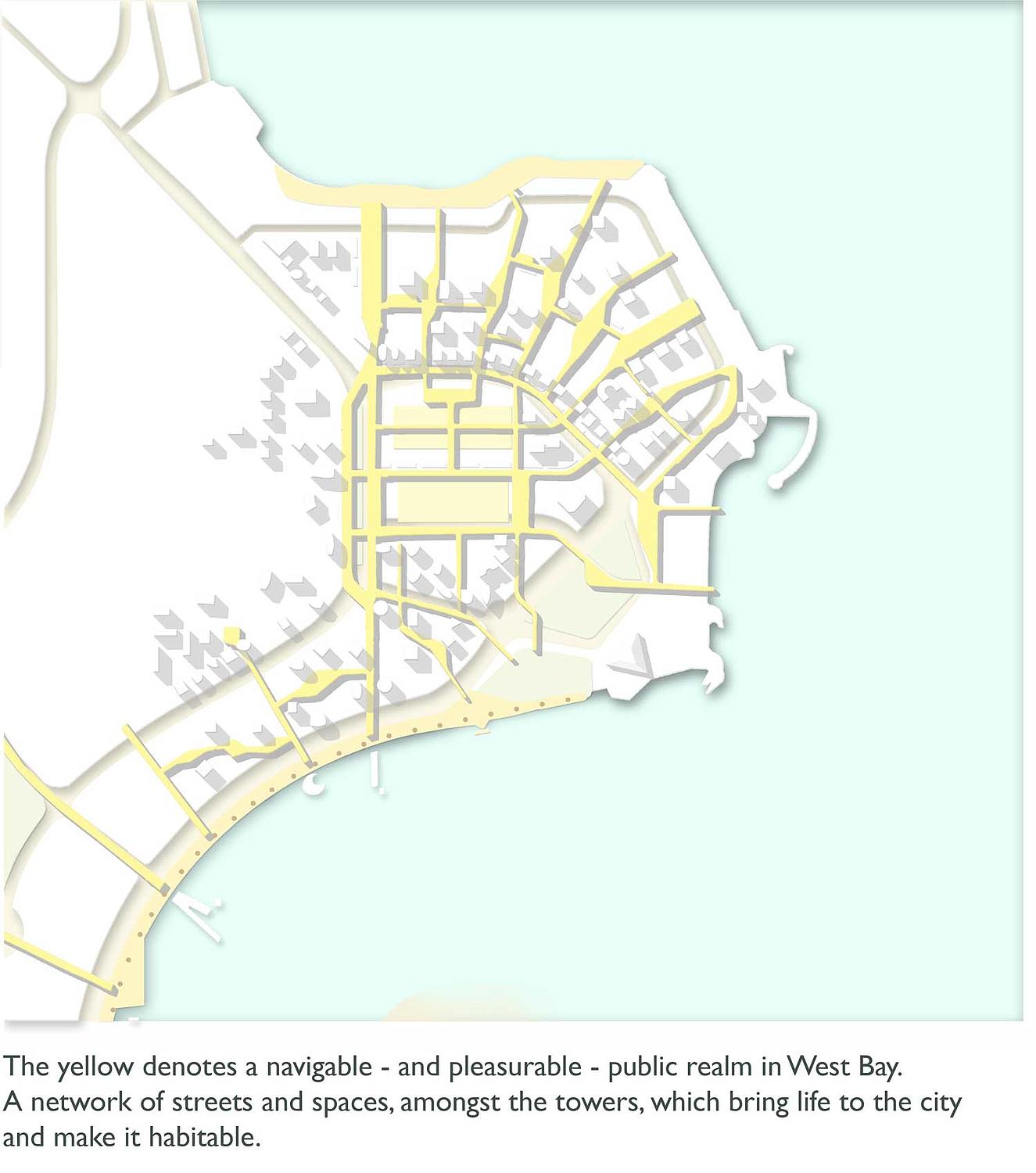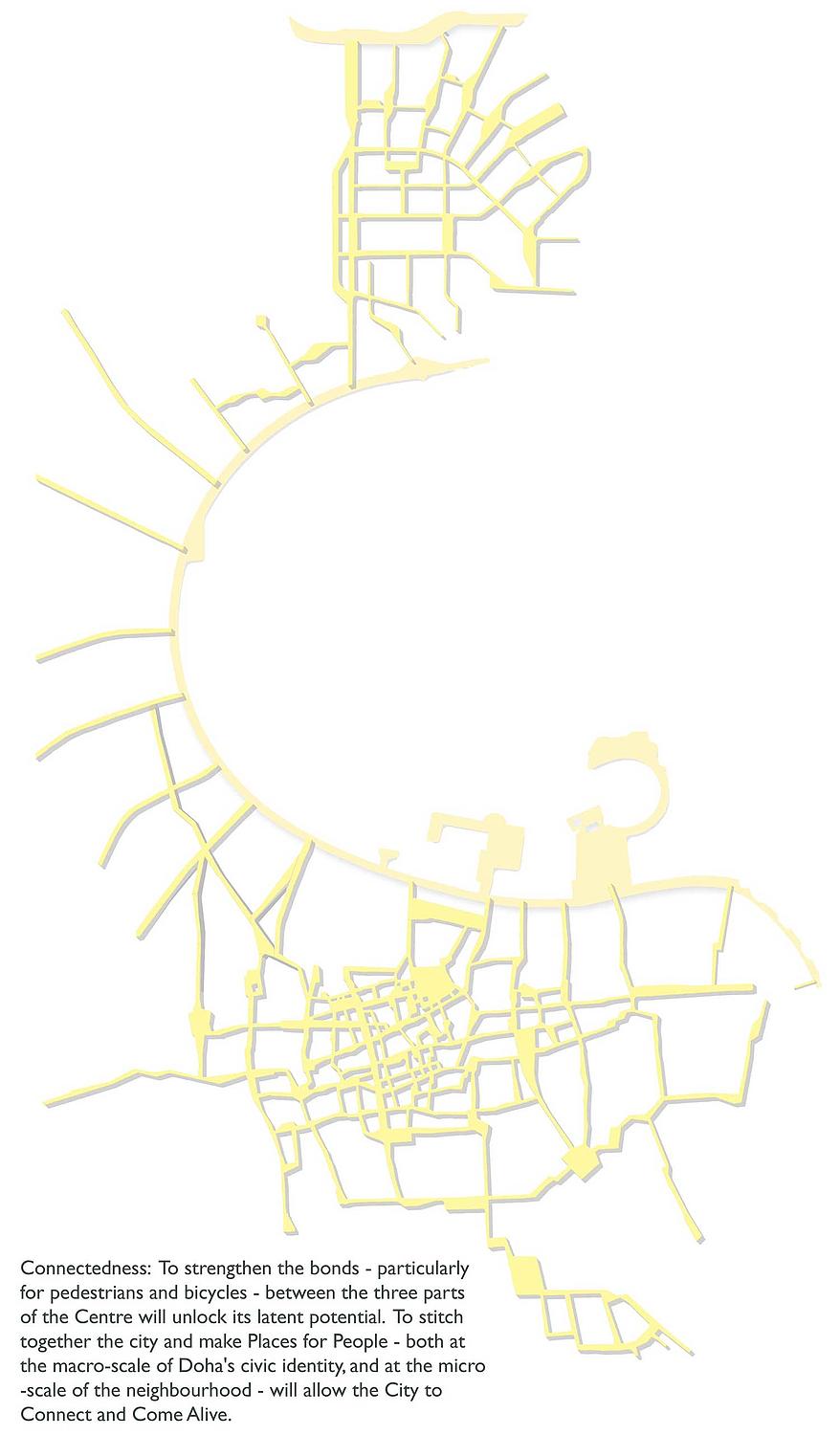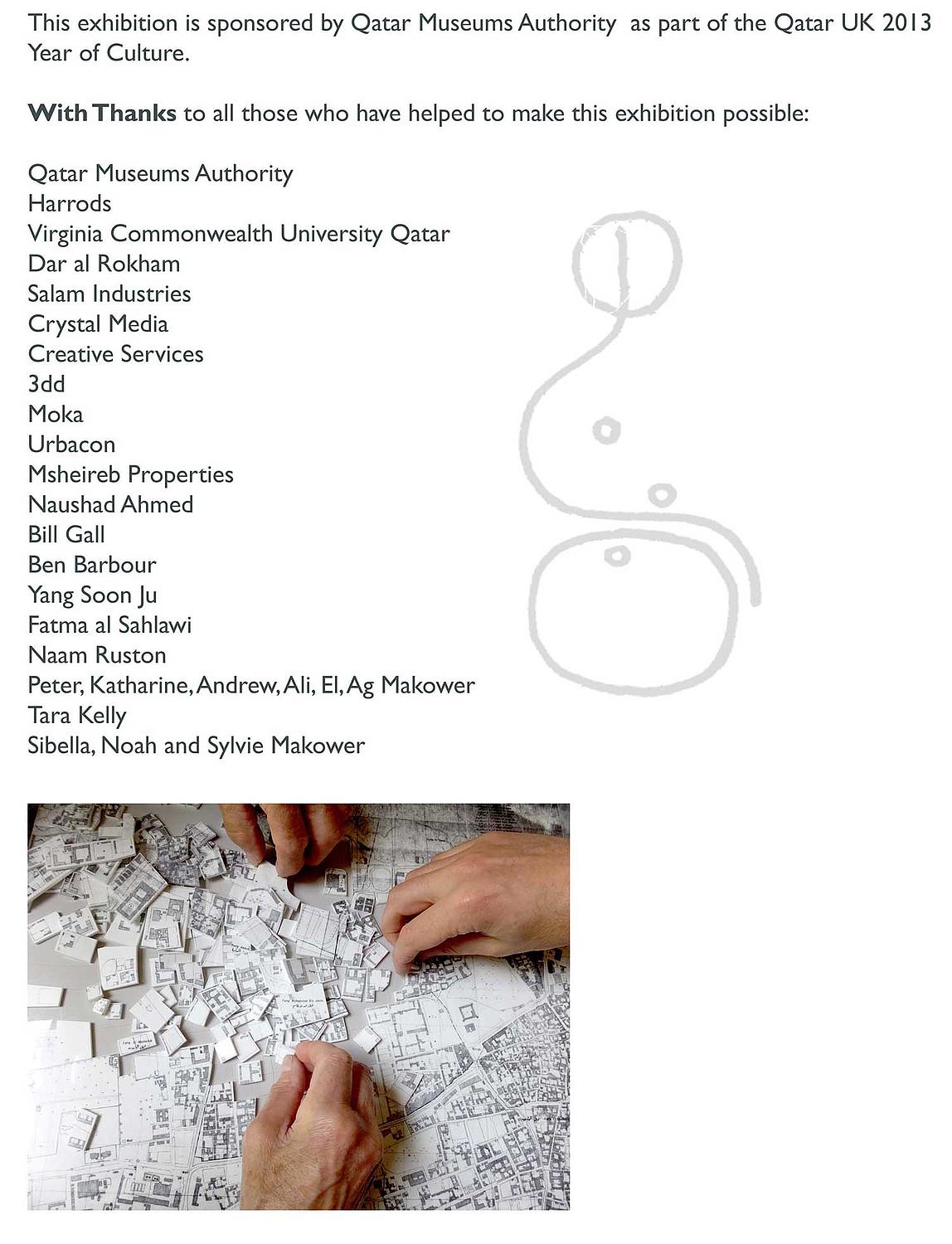Doha On Centre: The Jigsaw Of The City
DOHA_ON CENTRE: The Jigsaw of the City is an installation by Makower Architects, sponsored by Qatar Museums Authority as part of the Qatar UK 2013 Year of Culture. It concerns Doha’s tripartite city centre. It is an exploration of the essential character or ‘soul’ of the city, and grows out of Tim Makower’s close involvement in the development of the city.
The exhibition also features the inaugural collection of the World Jigsaw Company, a set of jigsaw puzzles, for children of all ages, which focus on Doha and its position in the World.
The exhibition is located at Harrod’s in London, 2nd floor, in the InQ cafe. It runs from August 11th to September 12th from 10am to 9pm daily, and 11.30am to 6pm on Sunday.
The content divides into four parts. Firstly, an overview of the city centre, accompanied by a large drawing and a film. These examine Doha’s ‘blood system’ and the role played by the city’s ‘heart and lung’; its major organs without which it would not have a life.
Starting with the first survey made of the city in 1952, the film records the process of tracing Doha’s lines and shapes – getting to know its anatomy – whilst looking at the contrasting, and potentially complementary, characteristics of its three central components: Old Doha, West Bay and the Corniche.
Secondly, a study of the three parts of Doha’s centre – Old Doha, the Corniche and West Bay – asks ‘what is their essence Past, their character Now and their potential Future ?’
The Centre of Doha is both three and one. First, Old Doha, the ancient tree, deep roots, springing new shoots, fragile but very much alive. The second is New Doha – West Bay – new growth; in need of cultivation, nutrients, and depth; unfinished work in the garden of Doha. The third is the Corniche, the unifying motif, the creative space, the iconic gathering place at the Centre of the City: the Doha Corniche. This is the horizon; the meeting of Land and Sea; the meeting of Past and Future…
Jigsaws are as old as the land; they are made both by God and Man. These clay jigsaw pieces were made by the Sun, after rain at the ancient Rawdah of Education City. Its lines are naturally drawn, responding to the forces of Earth, Air, Fire and Water. Its shapes come together in harmony; like a jigsaw puzzle; like a good city plan.
OLD DOHA
What is the character of Old Doha ? It is a living patchwork.
With the positive pulse of Souk Waqif and Msheireb at its heart, is there an alternative approach for the surrounding neighbourhoods; to enhance their identity, to bring out their latent potential, and to build on their Character; evolved over time ?
Old Doha is a Complex Collage; of old and new, large and small. It is like a precious piece of fabric, which can be passed down through a family from generation to generation; stitched and re-stitched, to be repaired not replaced; increasing in value.
Old Doha is the seed-bed of Doha’s city fabric. Can the newly blossoming cultural Renaissance in Qatar unlock a fresh, home-grown, vernacular and a new kind of harmony; a synthesis of Qatar’s architectural roots – both Traditional and the Early Modern – with a timeless contemporary and uniquely Qatari language of buildings and landscape, places and memory ?
The map, made by the Hunting Survey Company in 1952, shows every fereej, every house – every room almost- in Doha at the time. Having been through a period of decline through the thirties, when the pearling trade collapsed, the city was beginning to grow at this time. Wealth, motorcars, cement, electricity – and Modernity – had arrived. However, this was still very much a rooted city; evolving in a natural way.
Rootedness: To build on what we have – the historic fabric and rich language of Old Doha, the latent potential of West Bay, the serene arc of the Corniche – and to look far into the Future; to grow new shoots from deep roots; this is an Aim. Process matters, hand-in-hand with Product. The youth of Qatar are central to this. It is a process of Engagement which will lead to a sense of Belonging, and this is the bed-rock; the living roots, the Legacy.
TWENTY-ONE QUESTIONS
1. Abdul Azeez bin Ahmed Street Could AAA Street be re-invented as an Iconic Public Space ? A pilot project; to contrast & complement Msheireb, and to respond to its influence as a catalyst for regeneration.
2. Could the link to the Souk spark the re-activation of Old Doha ? This quiet but significant back street – Umm Wishaw – could be transformed into a dynamic mix of old and new; brought to life with new paving, lighting, street furniture, signage: ‘Designed in Qatar, Made in Qatar’.
3. An ‘expo’ of New Qatari Architecture – East side of AAA Street ? The buildings on the West side are a ‘timeless classic’ group of early modern Qatari apartment buildings and should be renovated. But the eastern buildings could perhaps be replaced by a new frontage of high quality ‘Qatari Contemporary’ buildings ?
4. Could AAA St be widened on the East side ? This would make an ‘outdoor room’, with enough space for big trees and maybe a linear carpark below ground ? The Jaidah Tower becomes an ‘end-stop’.
5. Could the large parking lot on A-Ring Rd become a local park ? Would Old Doha benefit from a ‘sports park’ with five-a-side football, a climbing wall and skate-park ? There could also be community buildings such as a nursery and a youth centre ‘Media-Tech’.
6. Facing the Park: exemplars of ‘Qatari Contemporary ? Can these very visible new developments be used as examples of a timeless contemporary, and distinctly Qatari, architecture – deeply rooted in tradition whilst boldly looking to the future.
7. How could existing buildings be adapted to greatest benefit ? Indoor/outdoor living – balconies – more shade, more privacy, more choice. Rooftop gardens and liwans – a living roofscape. Increased quality of life brings higher values and creates a more stable community.
8. Widening the A-Ring Rd: opportunities for high-quality buildings ? To build on the example of Msheireb whilst continuing to evolve a unique new vernacular amongst the local design community ? with Guidelines be drafted to achieve a greater harmony between buildings.
9. How can major Opportunity Sites most benefit these areas ? Can the process of optimizing density and land values at opportunity sites, help to safeguard the comprehensive renovation of the largely in-tact historic urban fabric, rather than ‘piecemeal cherry-picking’ of heritage highlights ?
10. Should some buildings on Msheireb St be retained ? For example the ‘3 sisters’, or the ‘Little Gem’ near the Souk. Are they more valuable as a part of the ‘collective memory’ of Old Doha, than as primary development opportunities ?
11. Can open spaces be created to allow the city to breath ? There are two obvious opportunities, both just South of Msheireb St, one on either side of AAA St. Each one also lends itself to becoming a public garden with carparking below ground.
12. Can minor open spaces & cross routes stitch the city together ? There are numerous opportunities for ‘pocket parks’ or barahas, perhaps focused on a single tree, a bench and a destination café. This, with an enhanced) network of pedestrian sikkas, will stitch the city; repairing the patchwork.
13. What contribution can the minor Opportunity Sites make ? Amongst the ‘heritage urban grain’ there are many undeveloped sites, capable of high quality, commercially viable mixed-use development; to enhance rather detracting from the Character of the area.
14. What opportunities does the new ‘Metro-Bus Hub’ bring ? In its own right, this major transport interchange should be a landmark of exceptional quality. Its influence on surrounding sites and public routes and spaces should be controlled. Public spaces and retail should extend below ground; down to the railway platforms.
15. Links West Links to Abdul Azeez can be made, to the south of the Metro. This can ensure pedestrian connectivity while the Metro is under construction. Links across Al Diwan St are also essential; to connect Msheireb to Zone 13 ‘Msheireb West’ and beyond it to Al Sadd.
16. Al Rayyan Rd: an appropriate frontage to the Grand Park Can new buildings on Al Rayyan Rd form a suitable frontage to the Grand Park; like the apartment buildings of Fifth Avenue facing Central Park ?
17. Can links to the Grand Park and the Corniche be optimized ? A Linear Park can be created along the East side of Al Diwan Street, with bike paths and an underpass to the Park.
18. Essence of the Corniche: to be renewed and reinforced ? A ‘Crescent of Lights’, on a grand scale, reinforces the identity of the Corniche and gives it a three dimensional presence: the iconic motif – and the gathering place – for Centre of the City.
19. Can the Corniche project unlock the ‘completion of West Bay’ ? With a pedestrian link between the Corniche and Omar al Mukthar Street, a grand urban boulevard can be created, running past the Convention Centre and City Centre, which provides a spine to link to the Northern Beaches.
20. Connect: Msheireb, the Souk, the Corniche and the Harbour ? There are opportunities to strengthen connection between Barahat al Nouq (the central space of Msheireb) and the Harbour, via the Burial Ground, the Souk and the Corniche.
21. A-Ring Rd; easier to cross – to find lines of desire ? Are there ways, such as ‘super-crossings’ or inhabited footbridges, to make the A-Ring less of an obstacle to movement by pedestrians or bikes: bringing the city to the centre and the centre to the city ?
CORNICHE
What is the essence of Doha’s Corniche today ? Can this be the basis of its future renewal ? Its Calm Crescent is the timeless motif of the City. What simple moves can reinforce its Identity and raise its profile to the Iconic status it deserves ? Does it need to be reinvented ? Or just reinforced, renewed and enriched; as a lasting legacy for the Future ?
The Curve of the bay encircles the Centre. Doha – dowaiha – embrace. The Curve embraces the space of the sea. Land and Sea (Earth and Water) Wind and Sun (Air and Fire). It is out pride and joy, our meeting place; our Majlis. The City speaks to itself across the bay; Old City, new City; slow and fast, The Curve rises up and a Crescent is formed. A Corona of light, day and night. A burning Crown for Celebrations and A Collector for our Memories.
WEST BAY
How can West Bay become an integrated and hospitable piece of Doha’s Centre ? Can new layers of enclosure be added – a ‘retro-fit city’ – to create shade, shopfront and streets for people ? Can West Bay become an easy place to move around; to find one’s way, and cross the road in safety ?
There is too much space in West Bay. The buildings are like toys, scattered accidentally on a floor; they are objects and the space between them is residual.
Linear buildings with arcades and a living mix of uses should be added to give definition to this piece of the city; currently looking better from a distance than it does from close-up.
